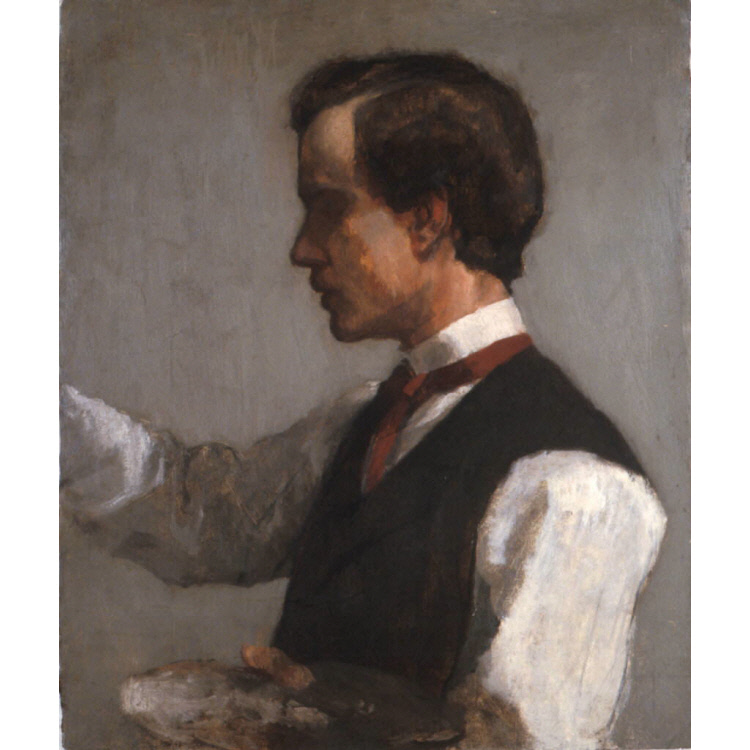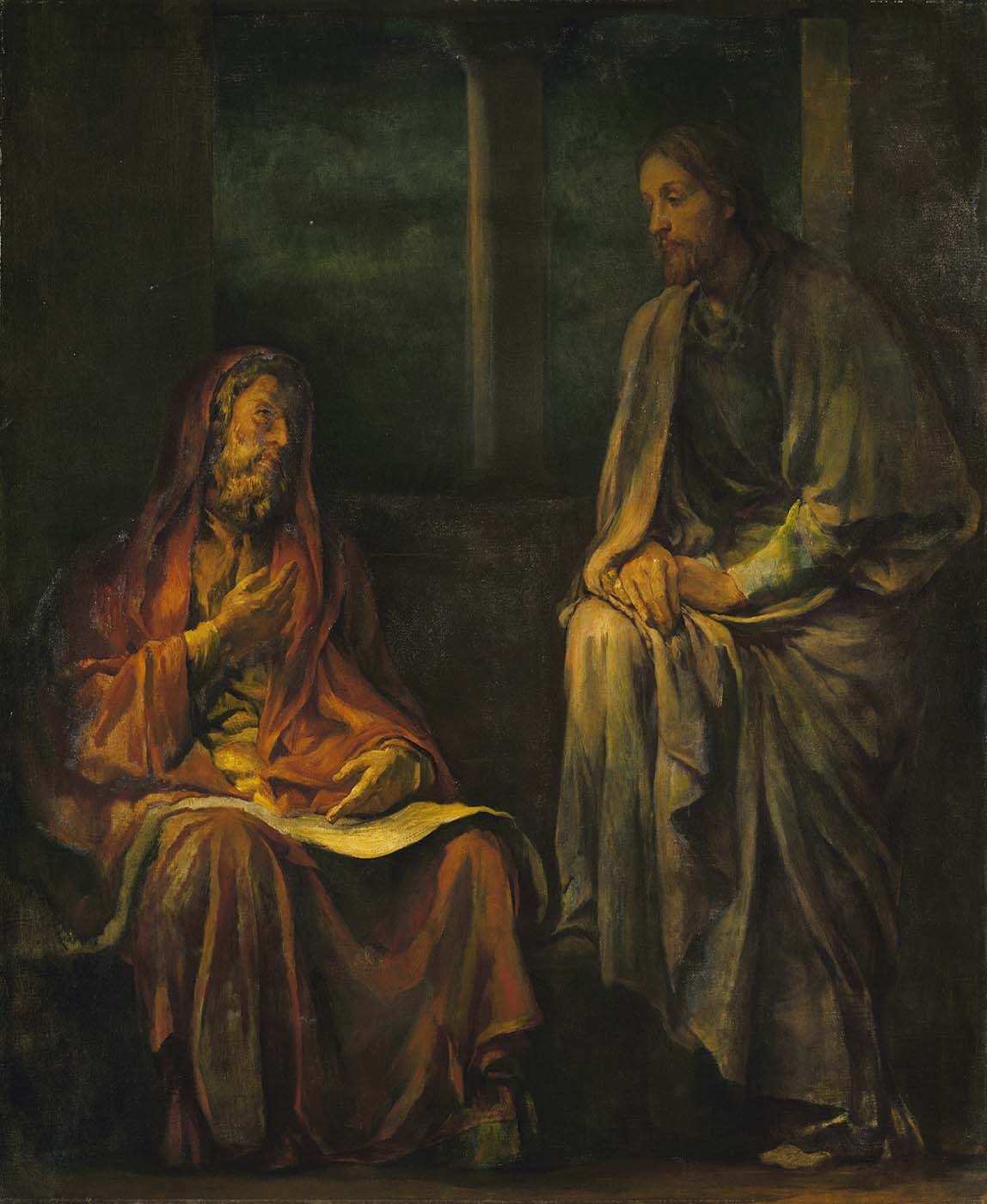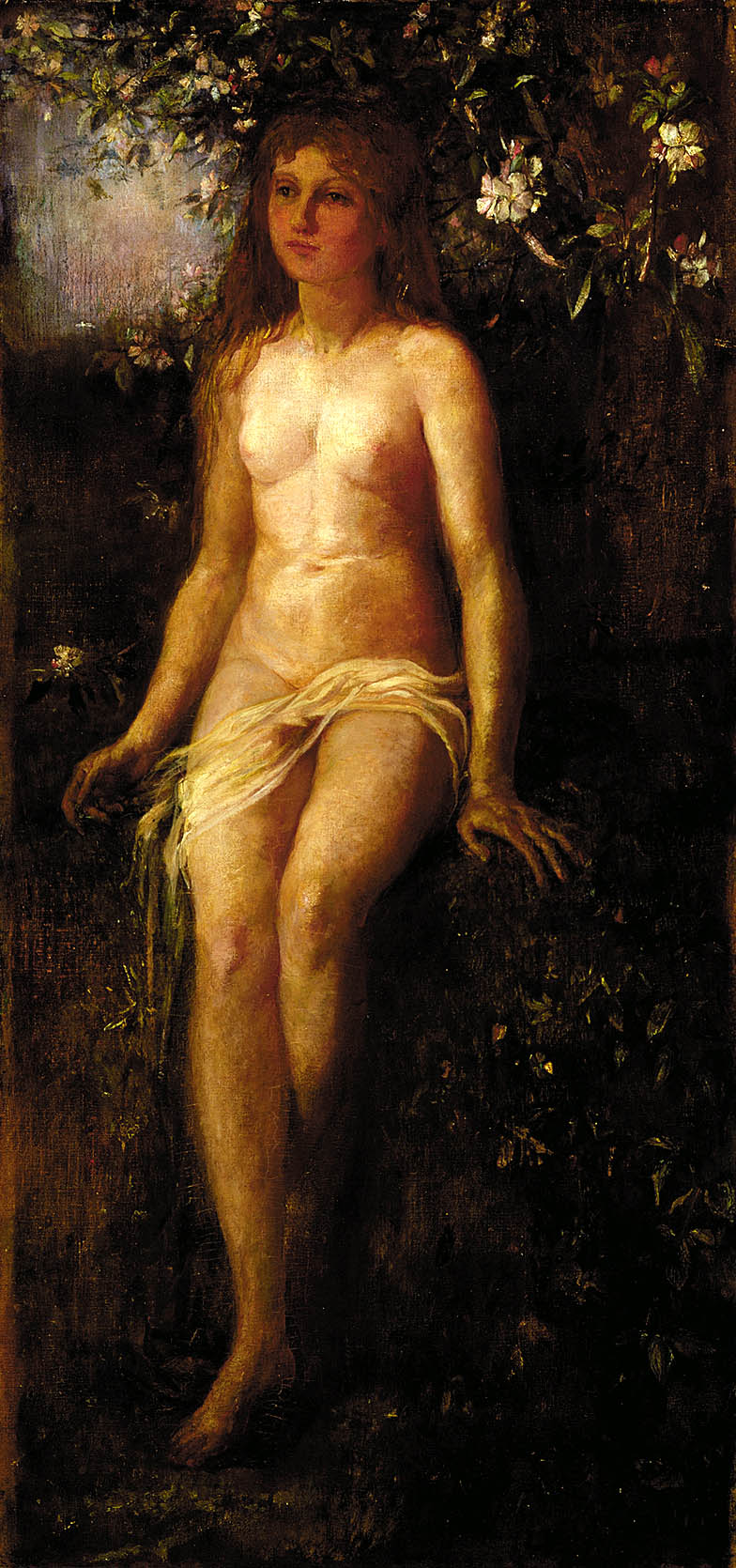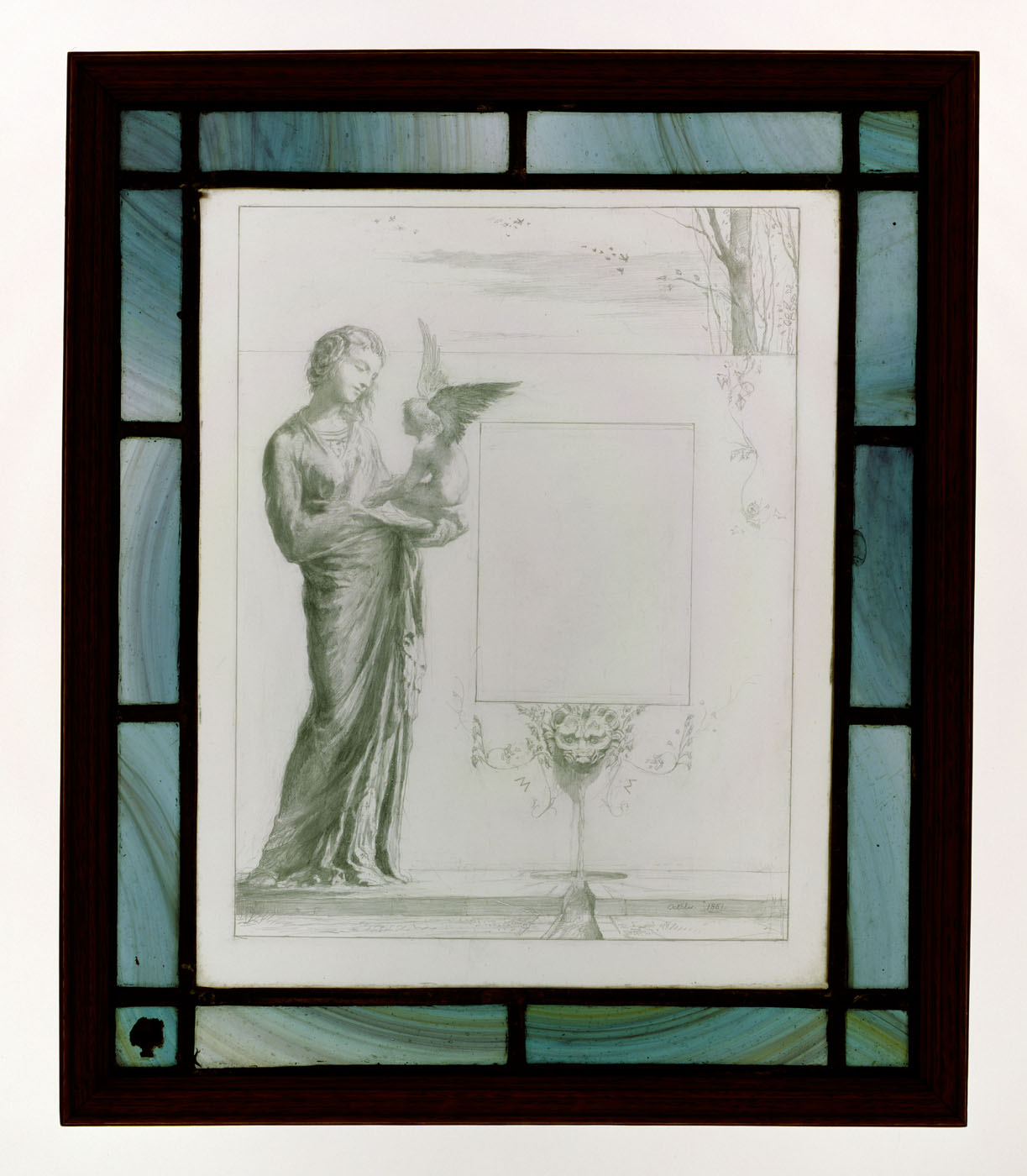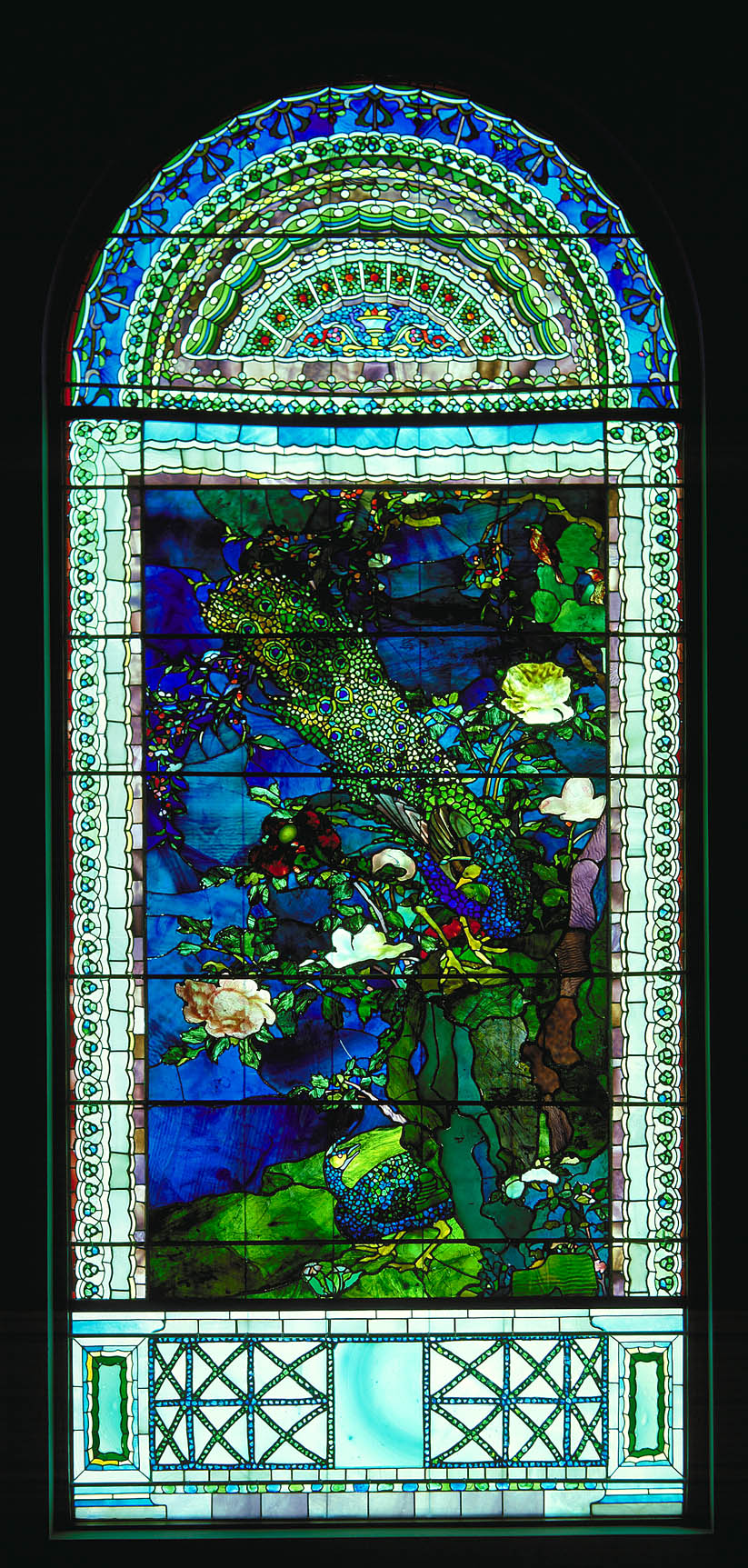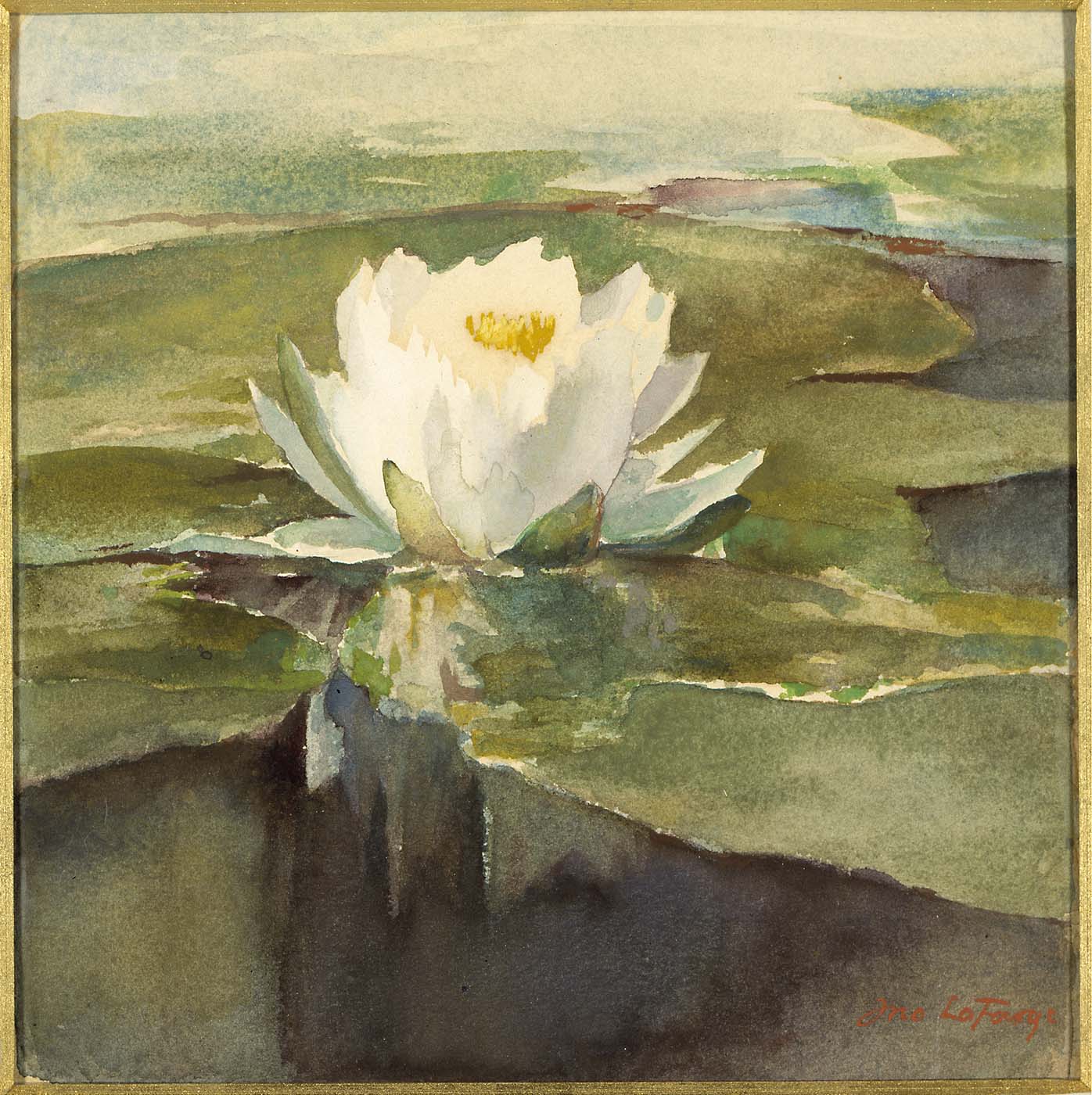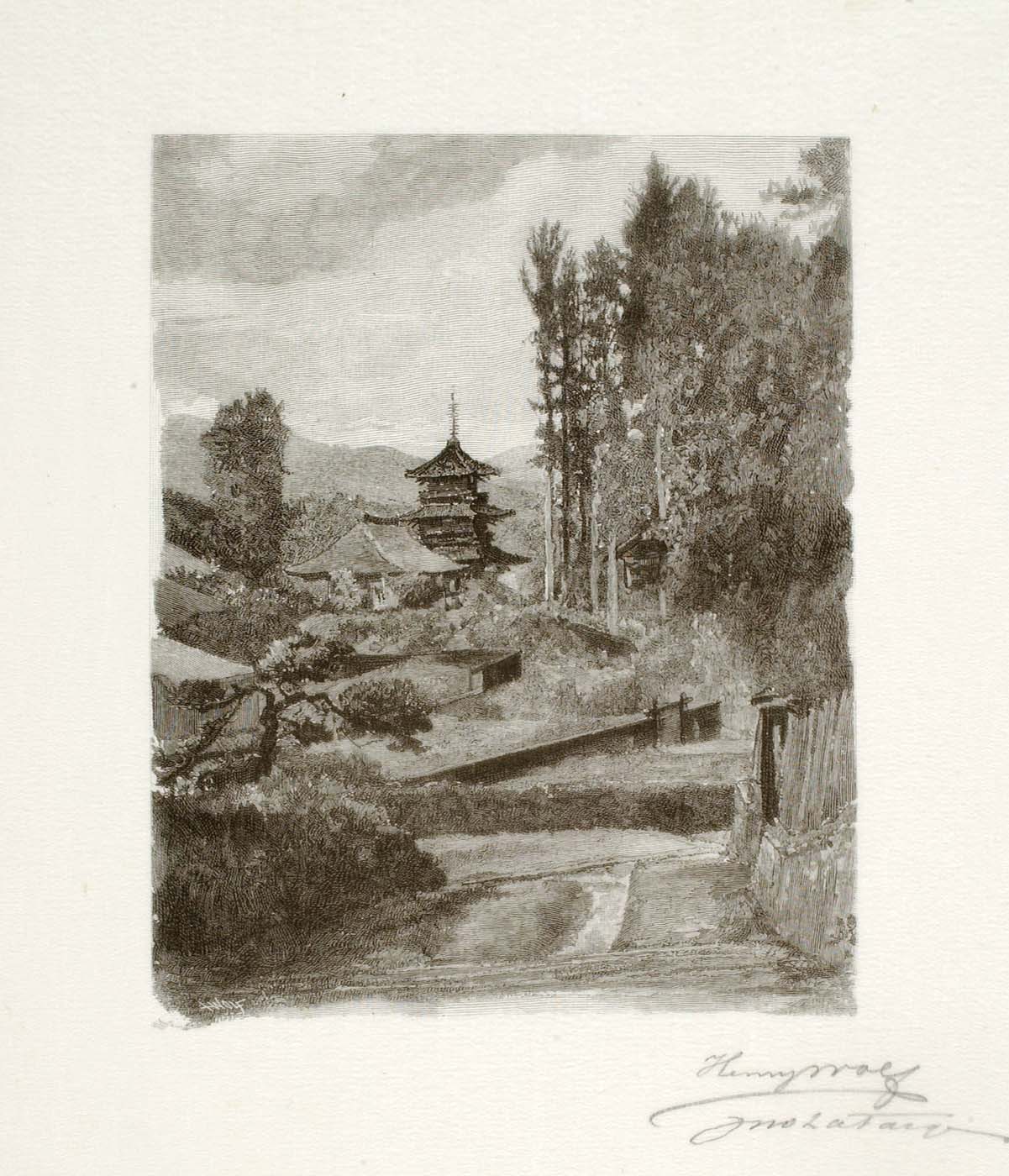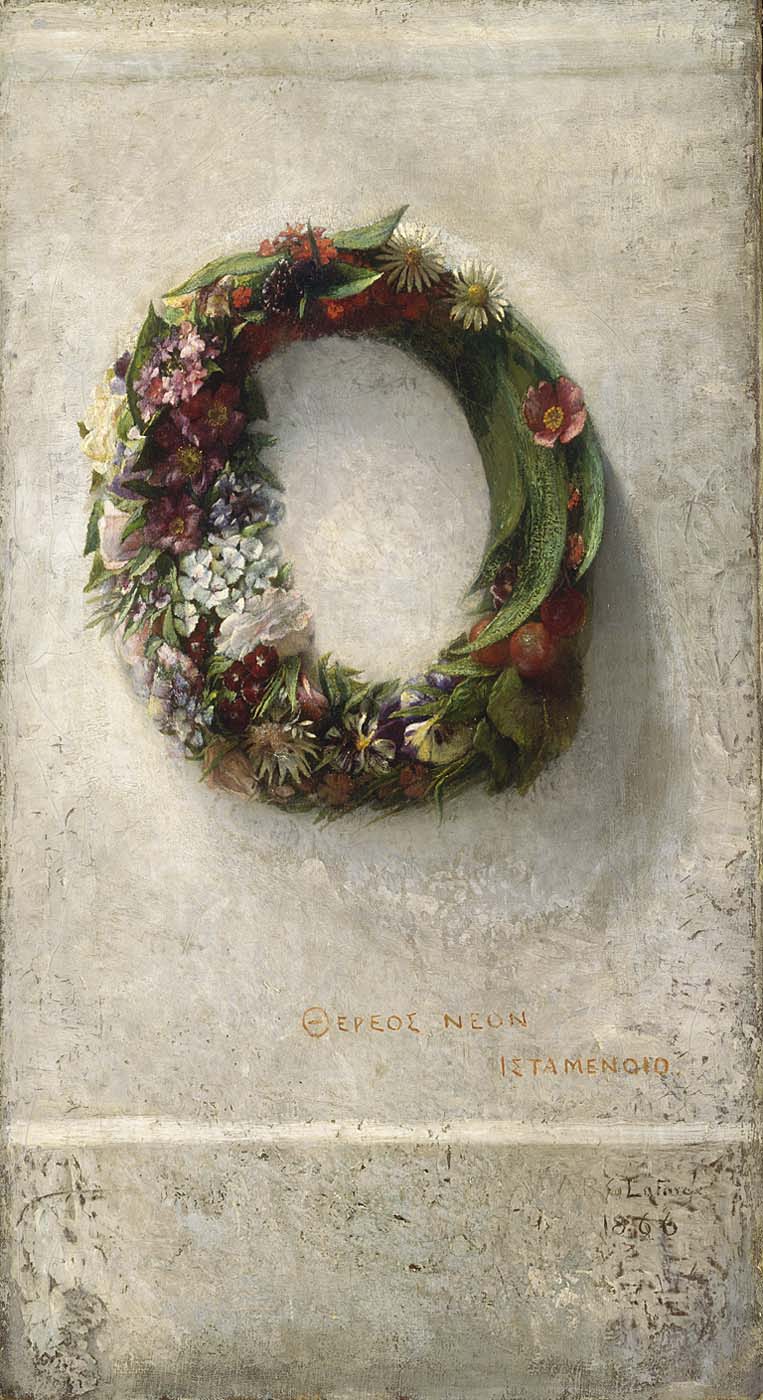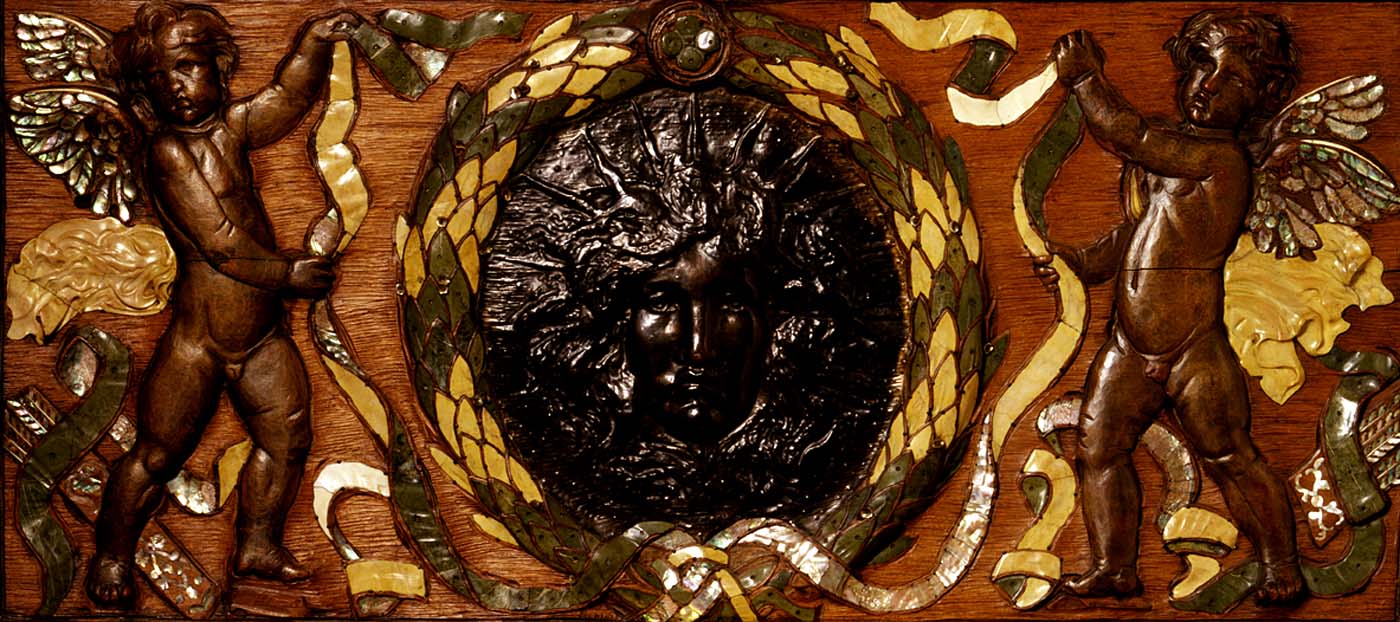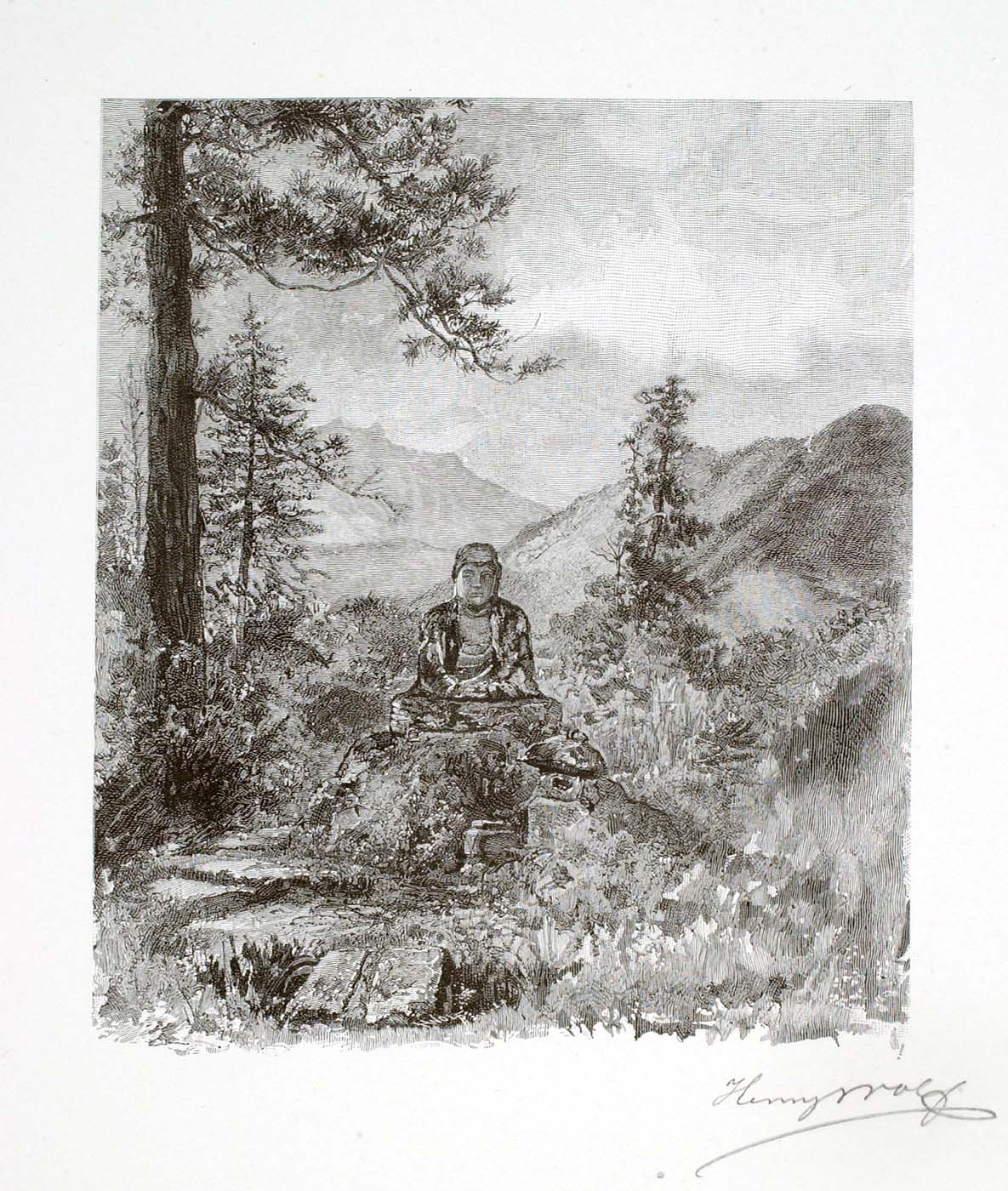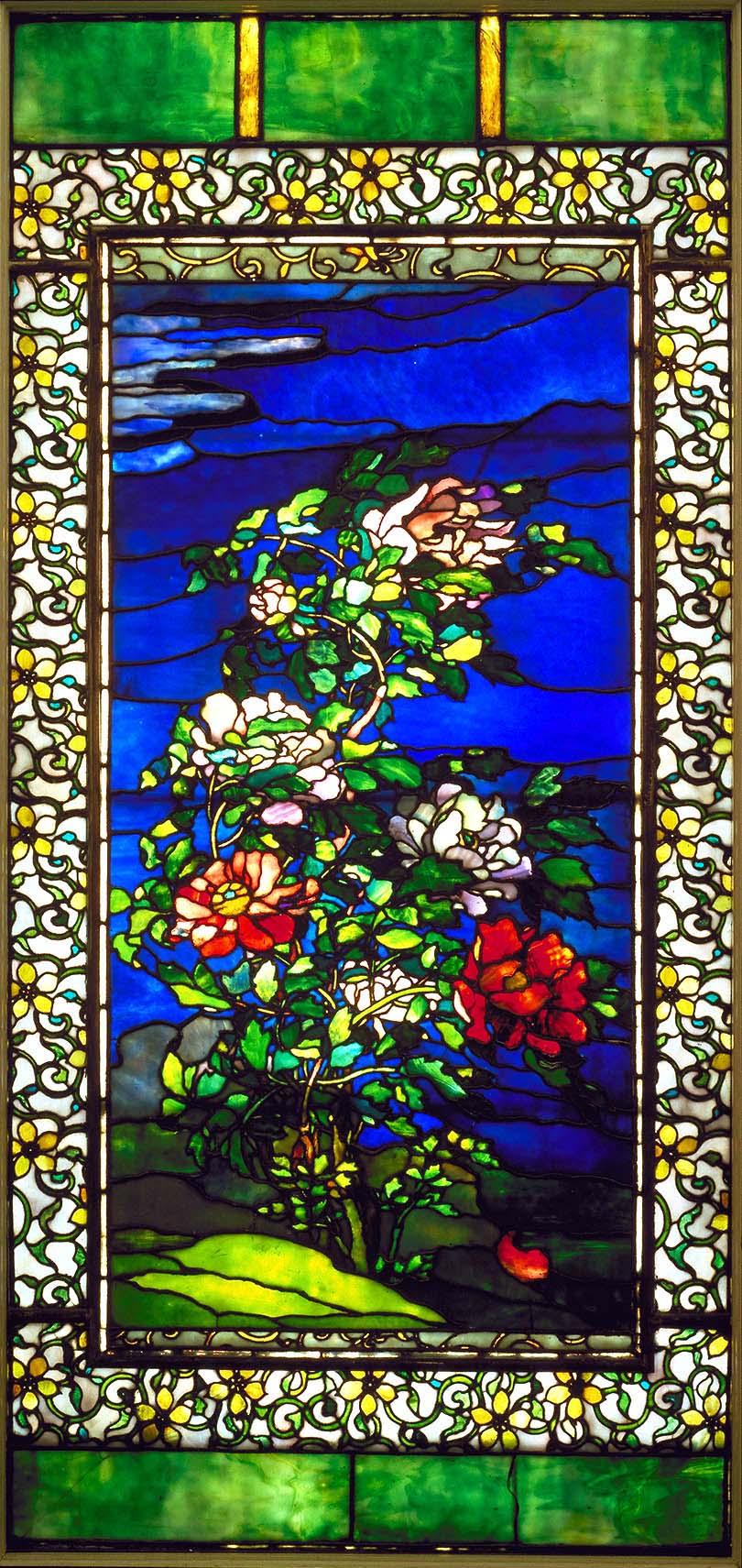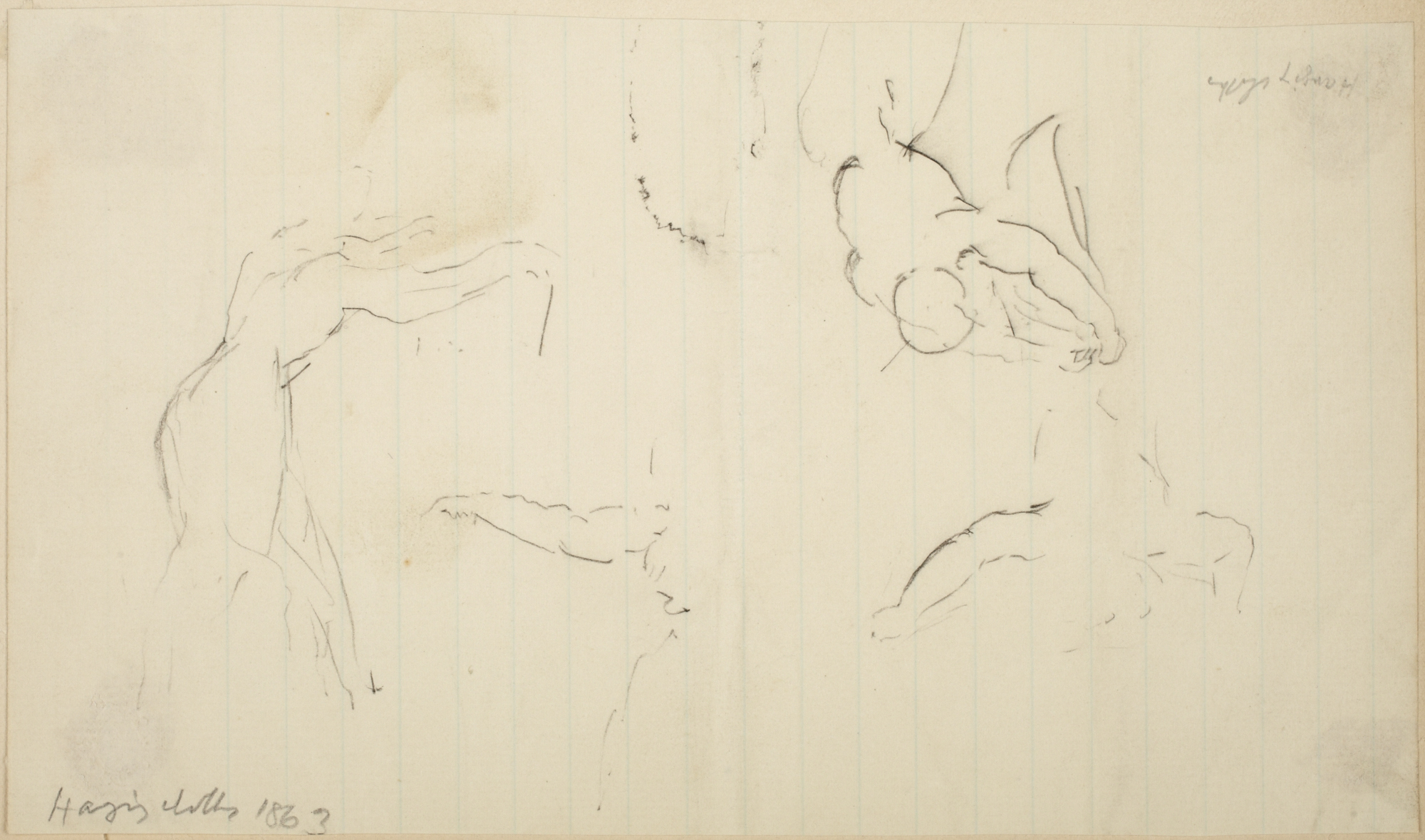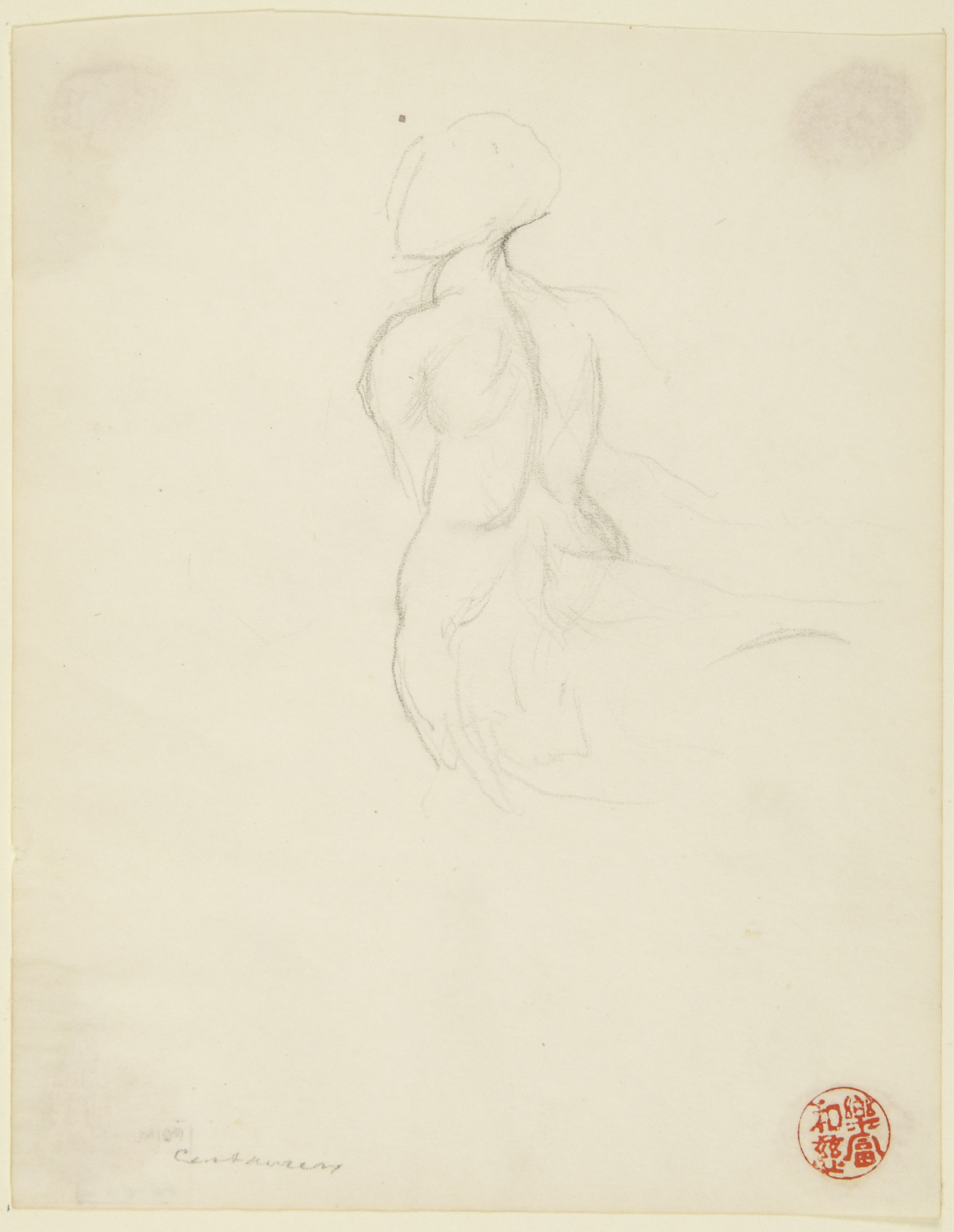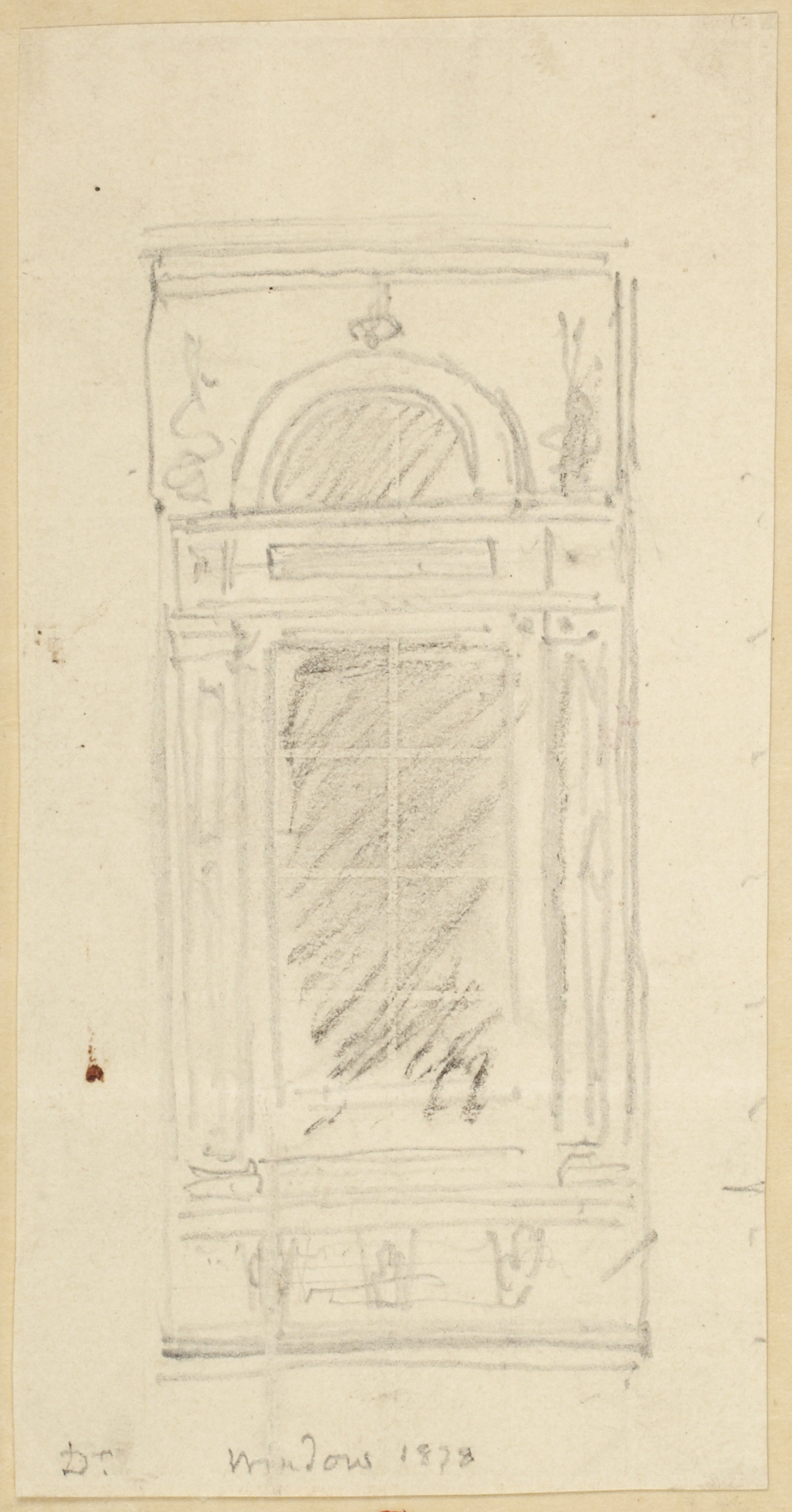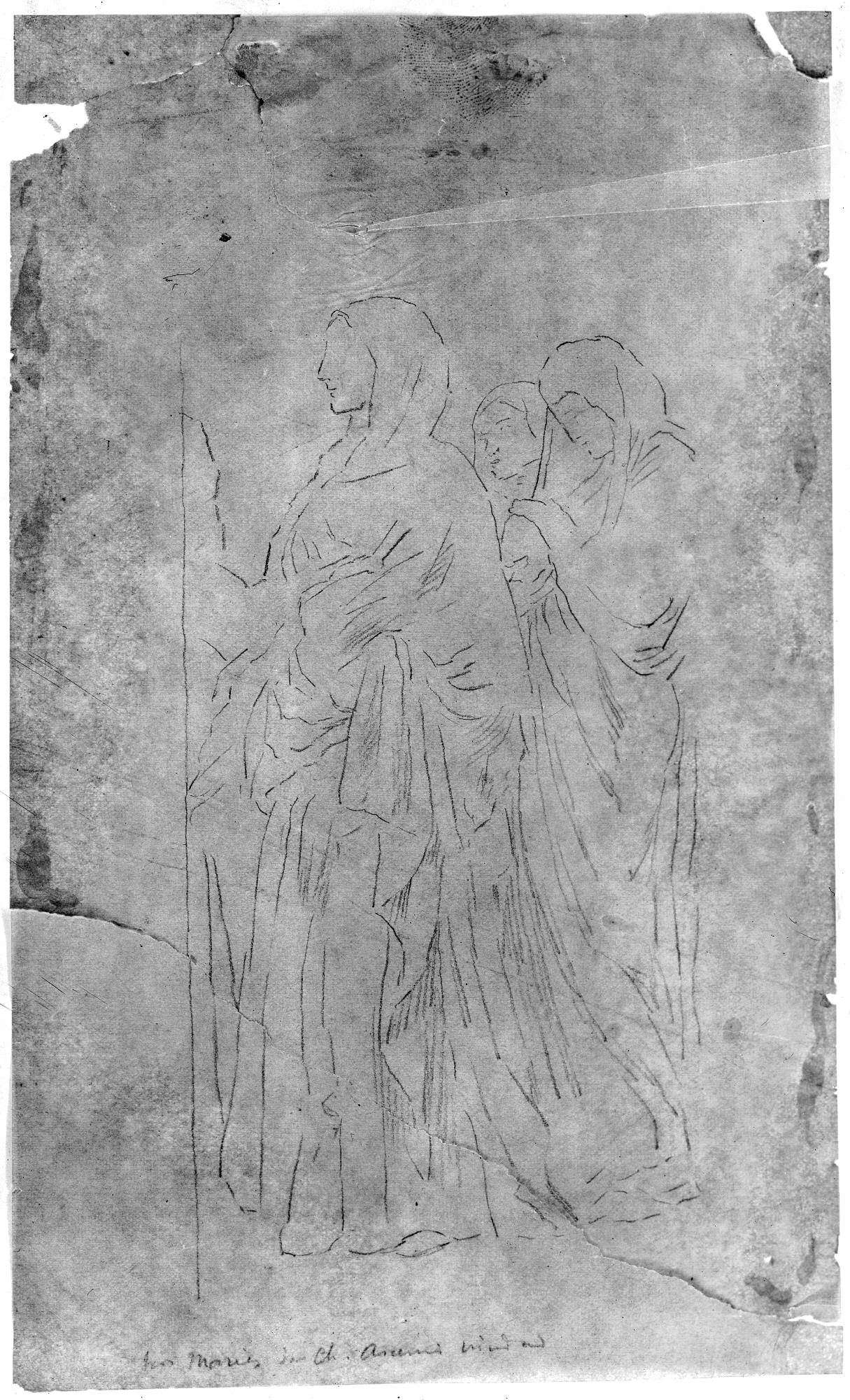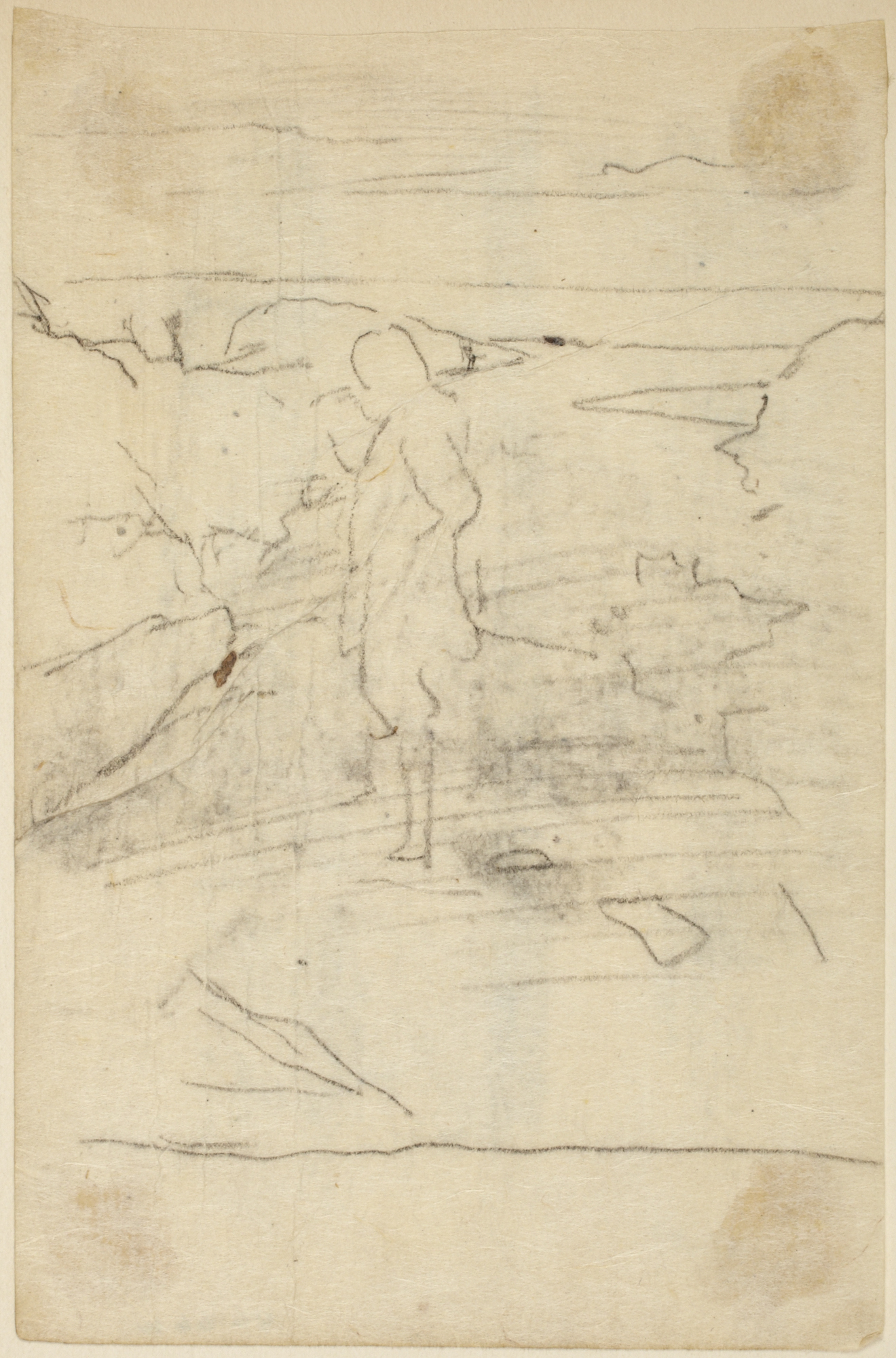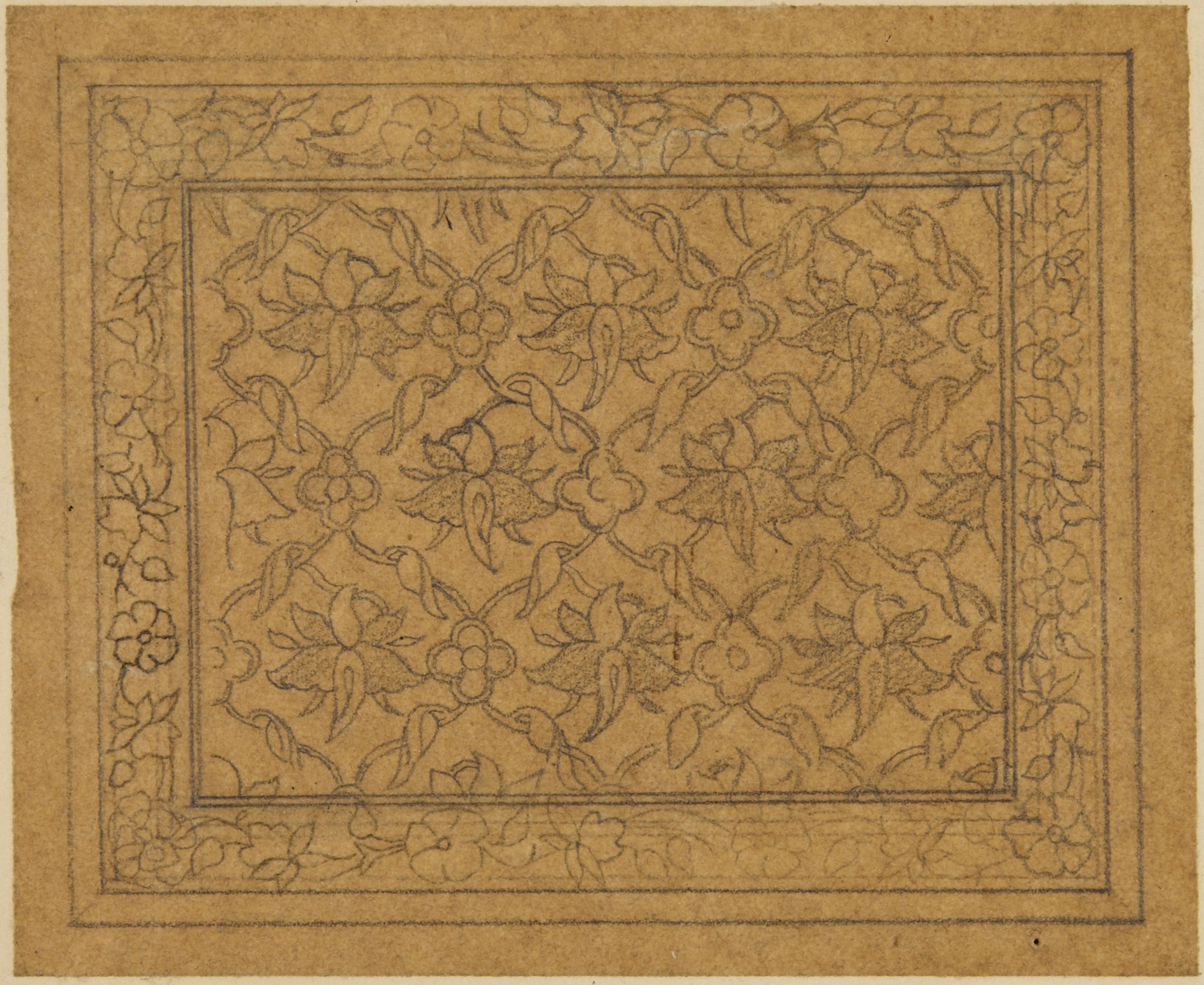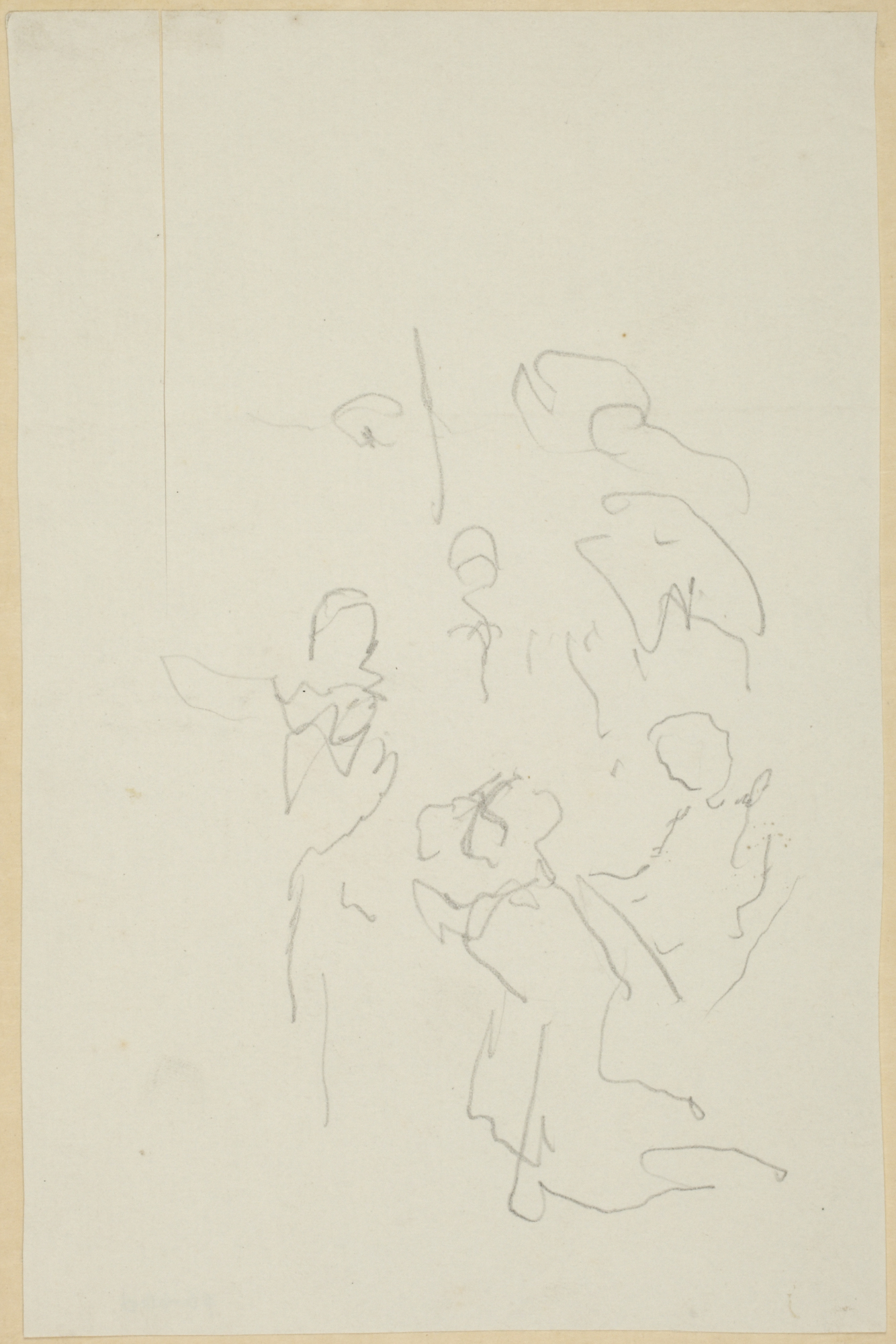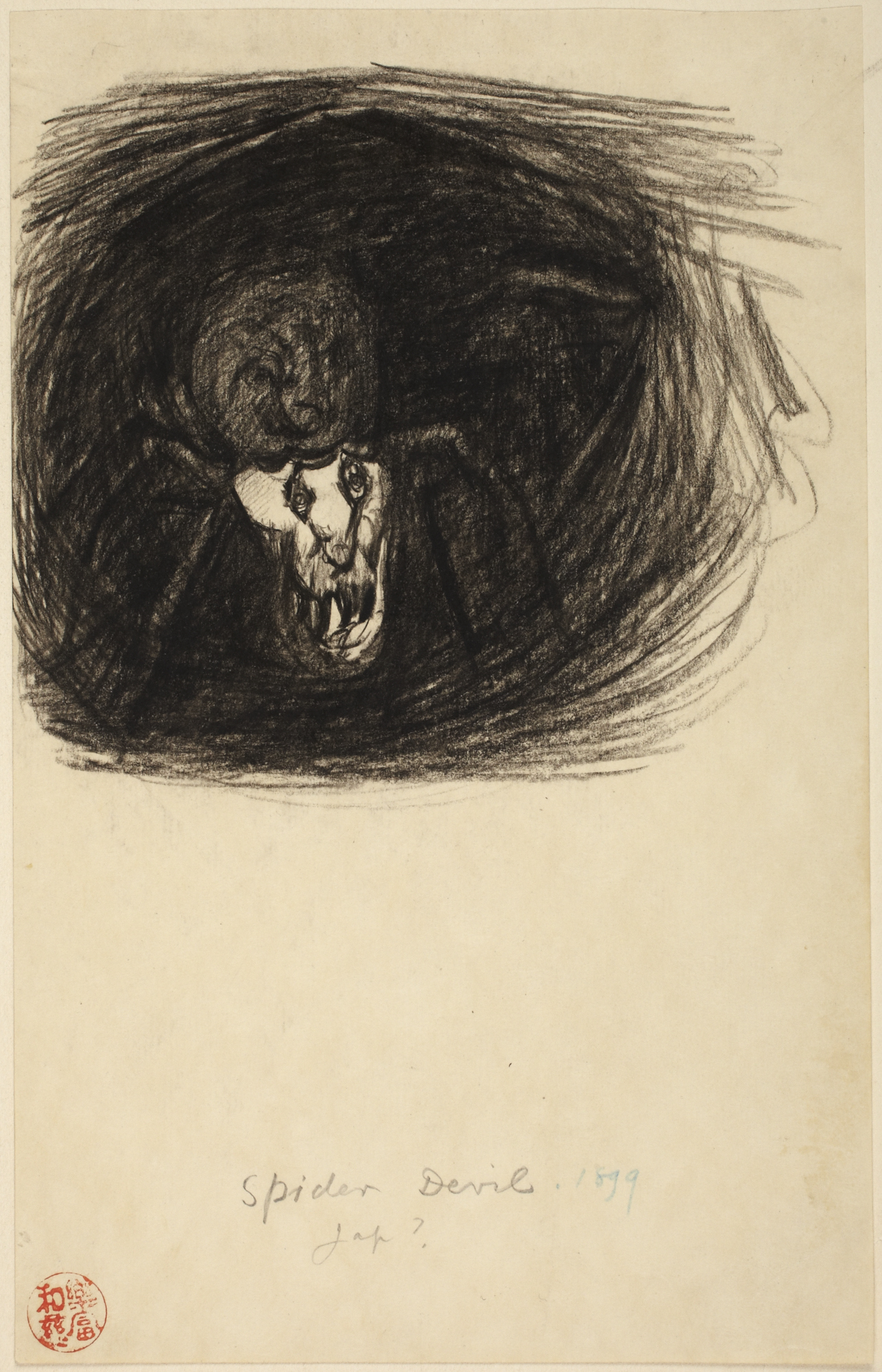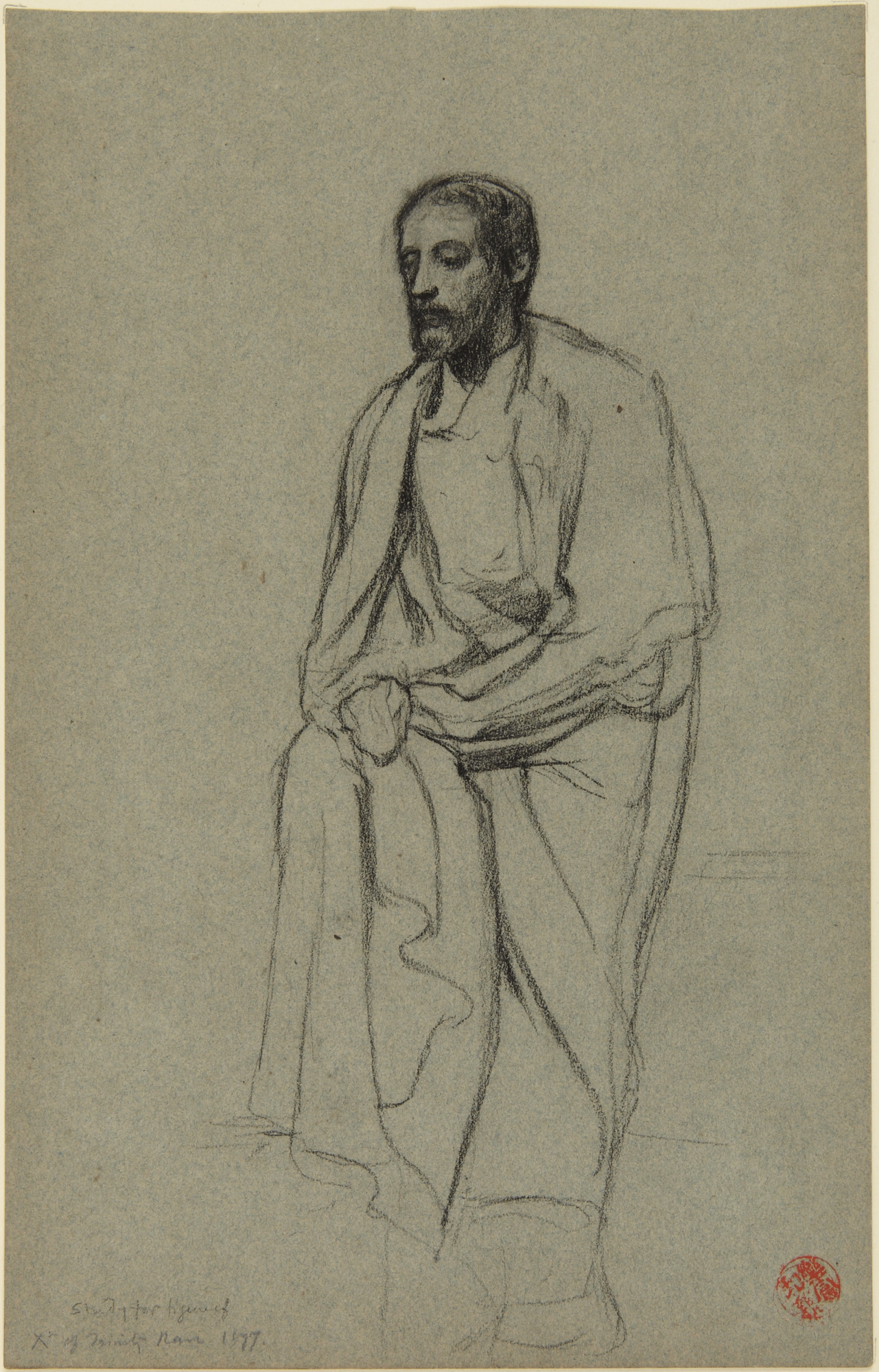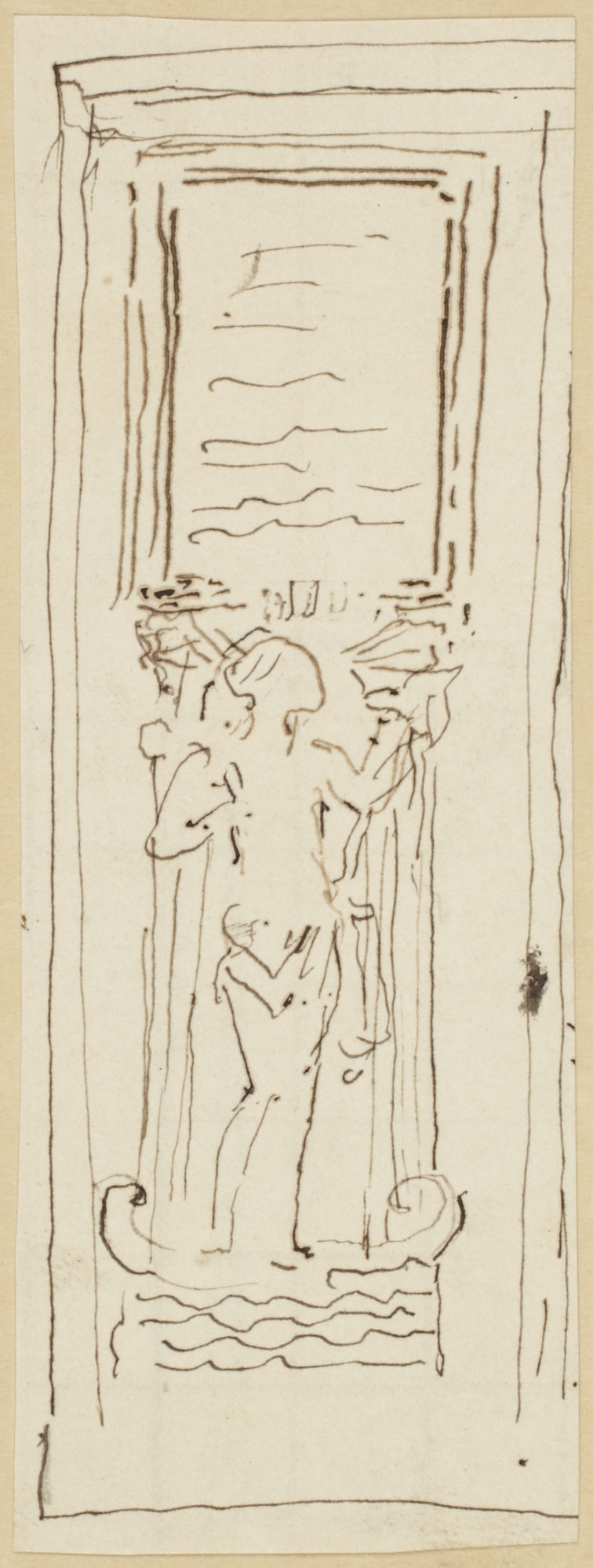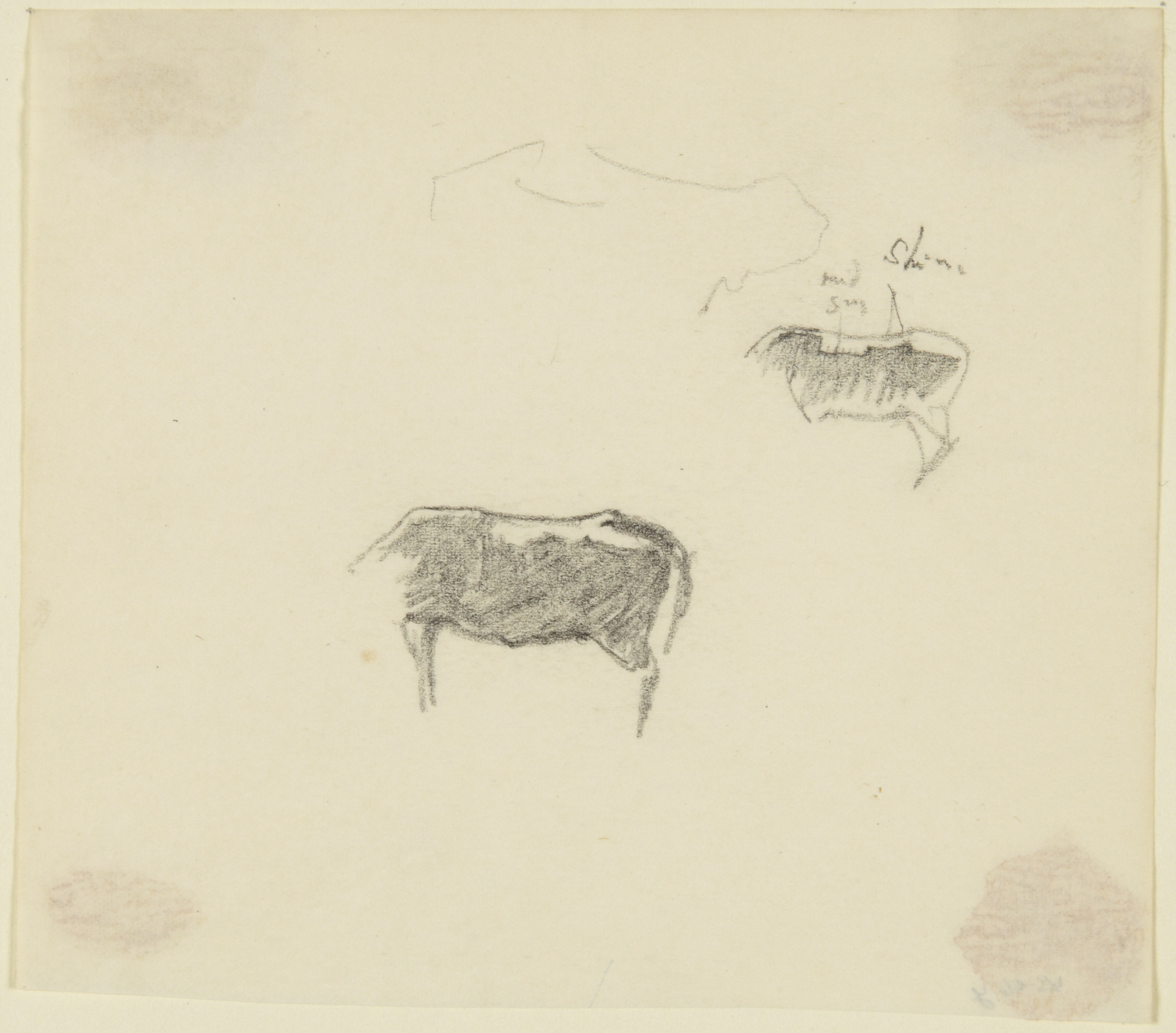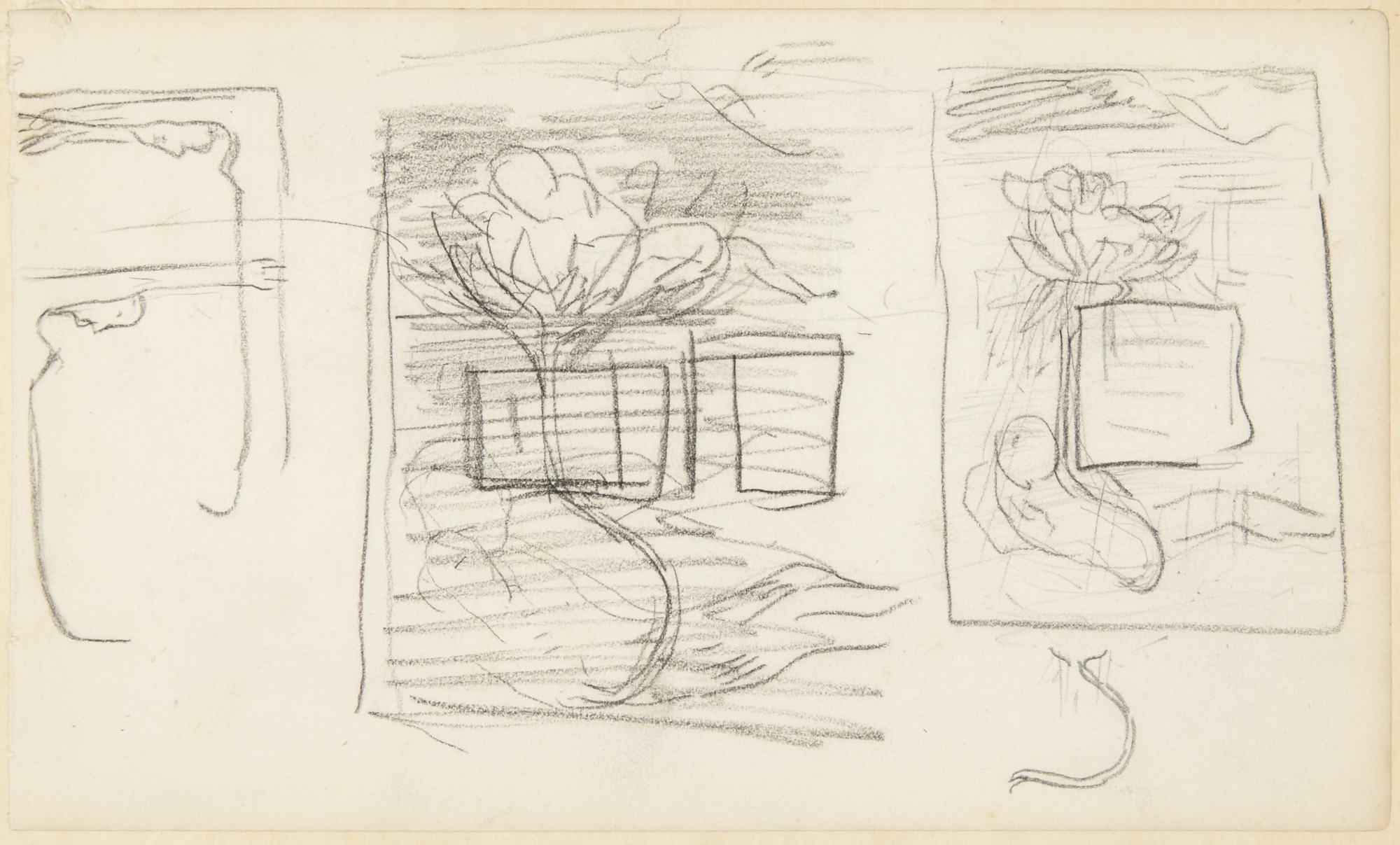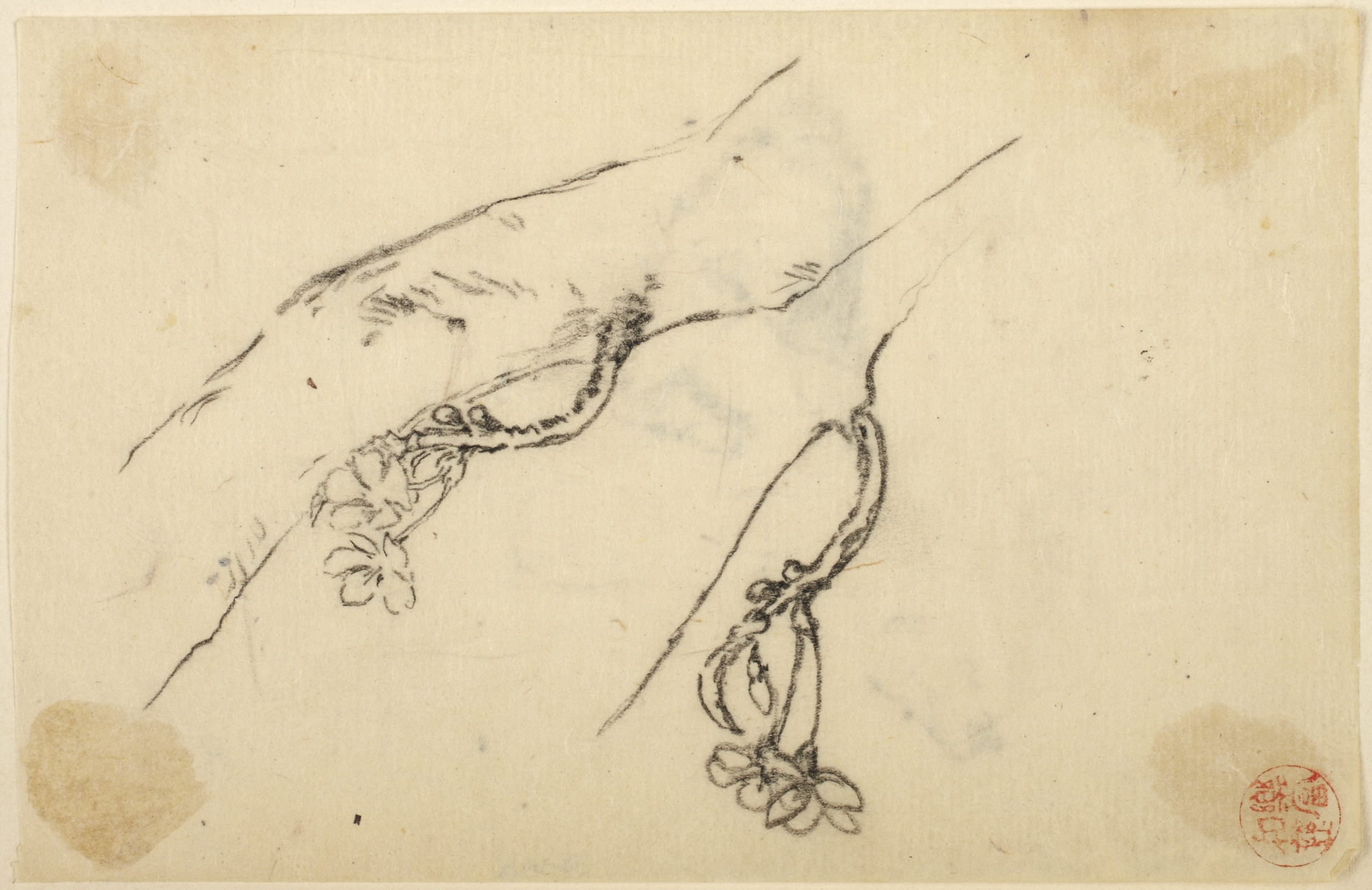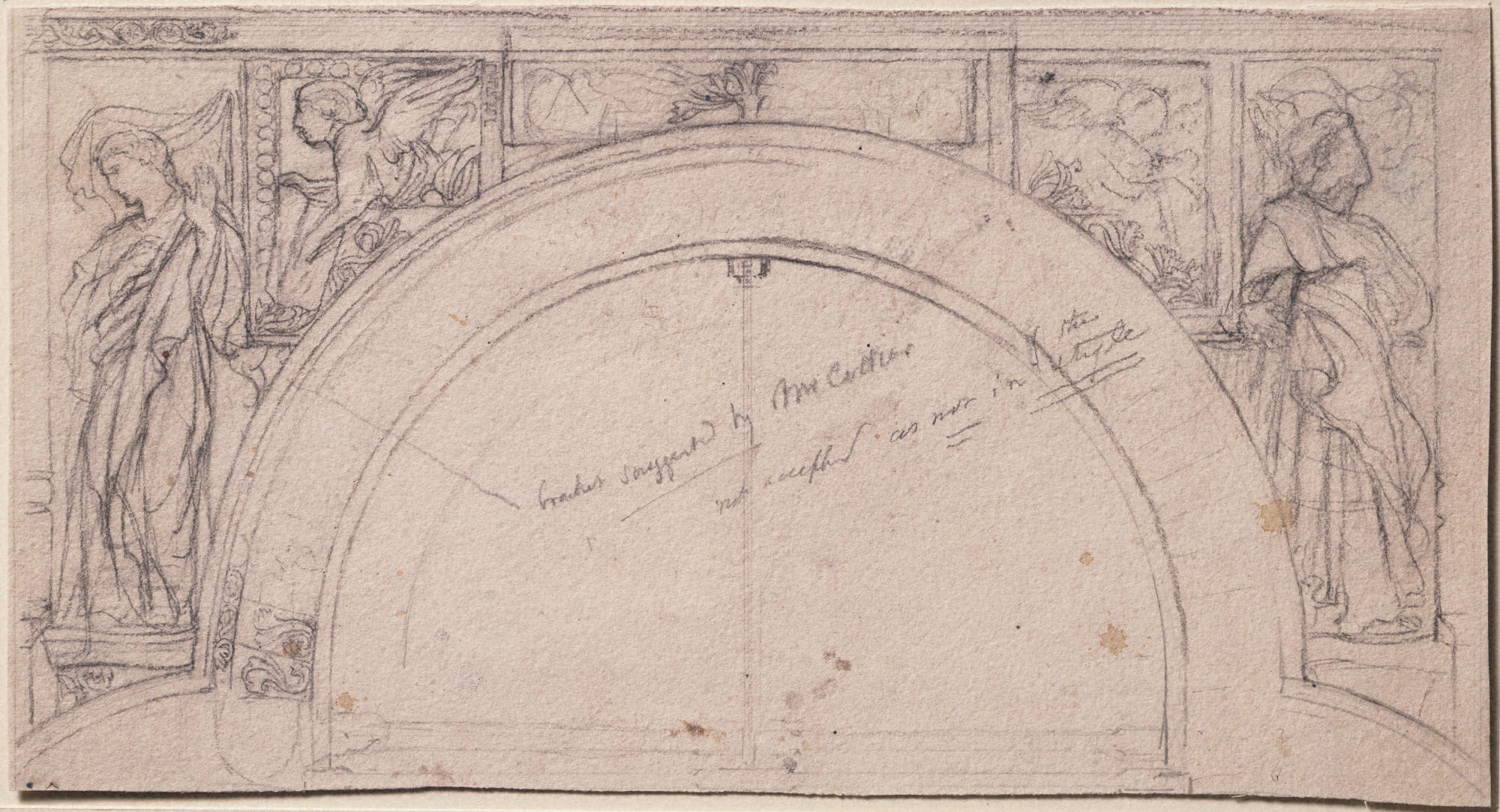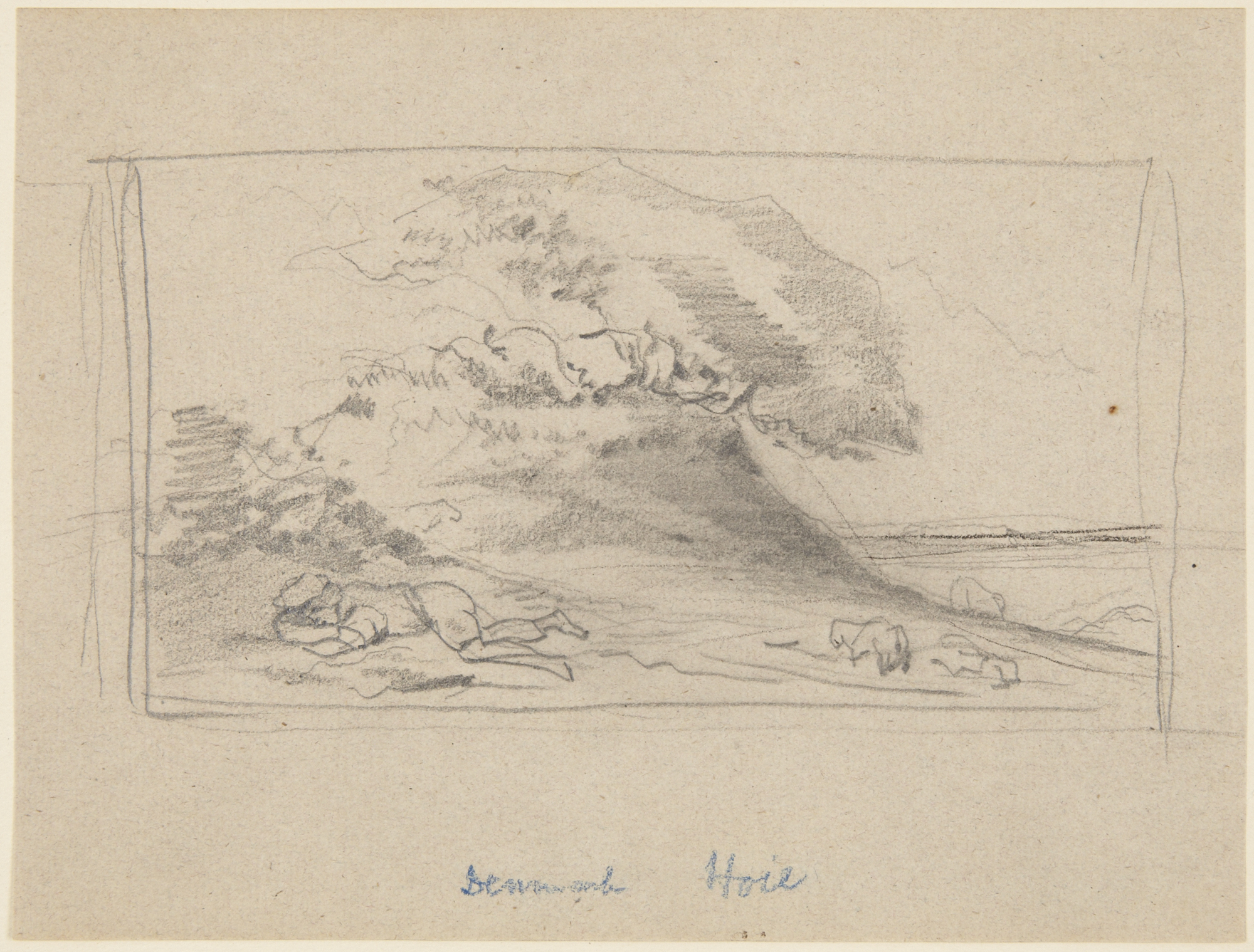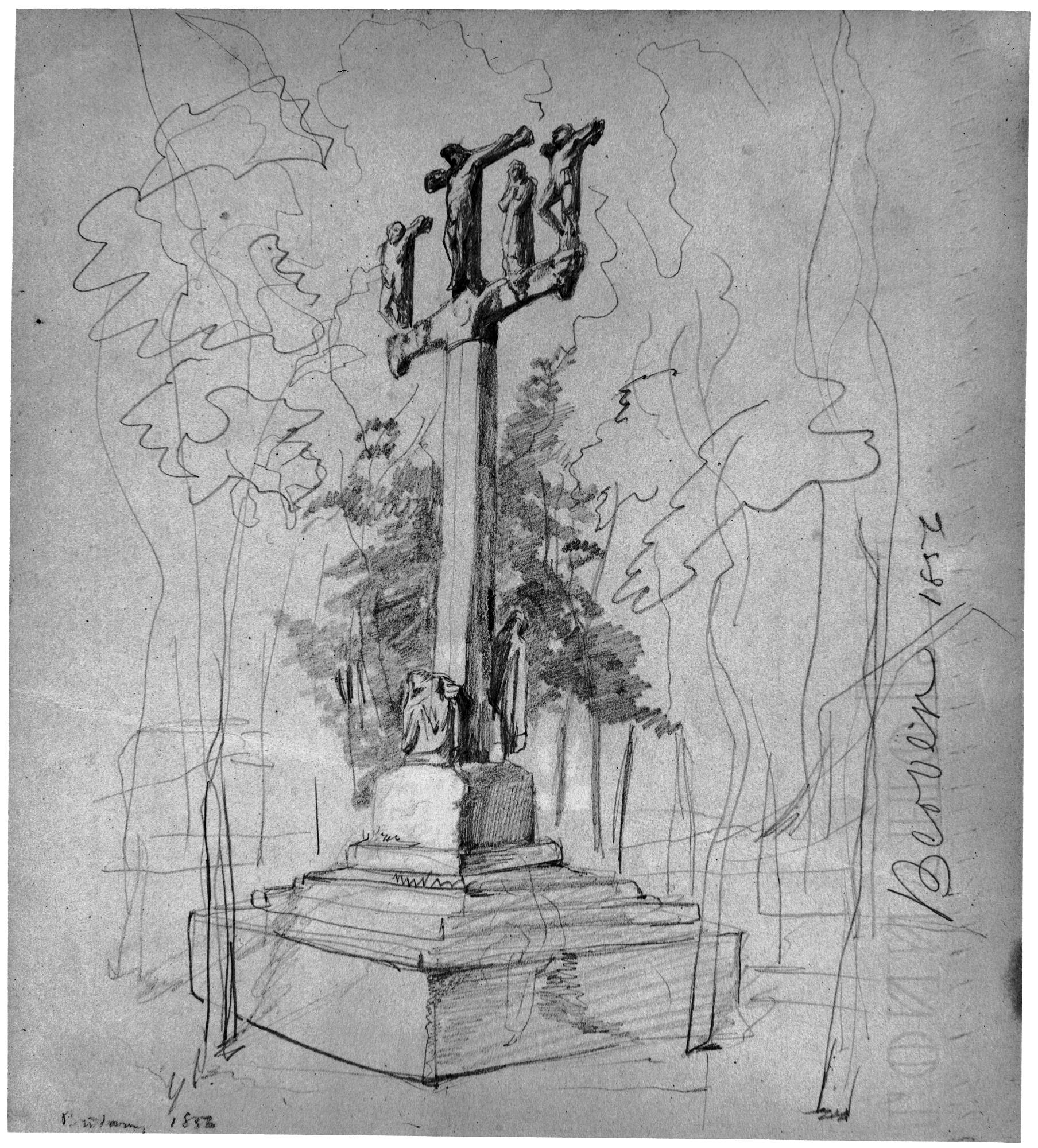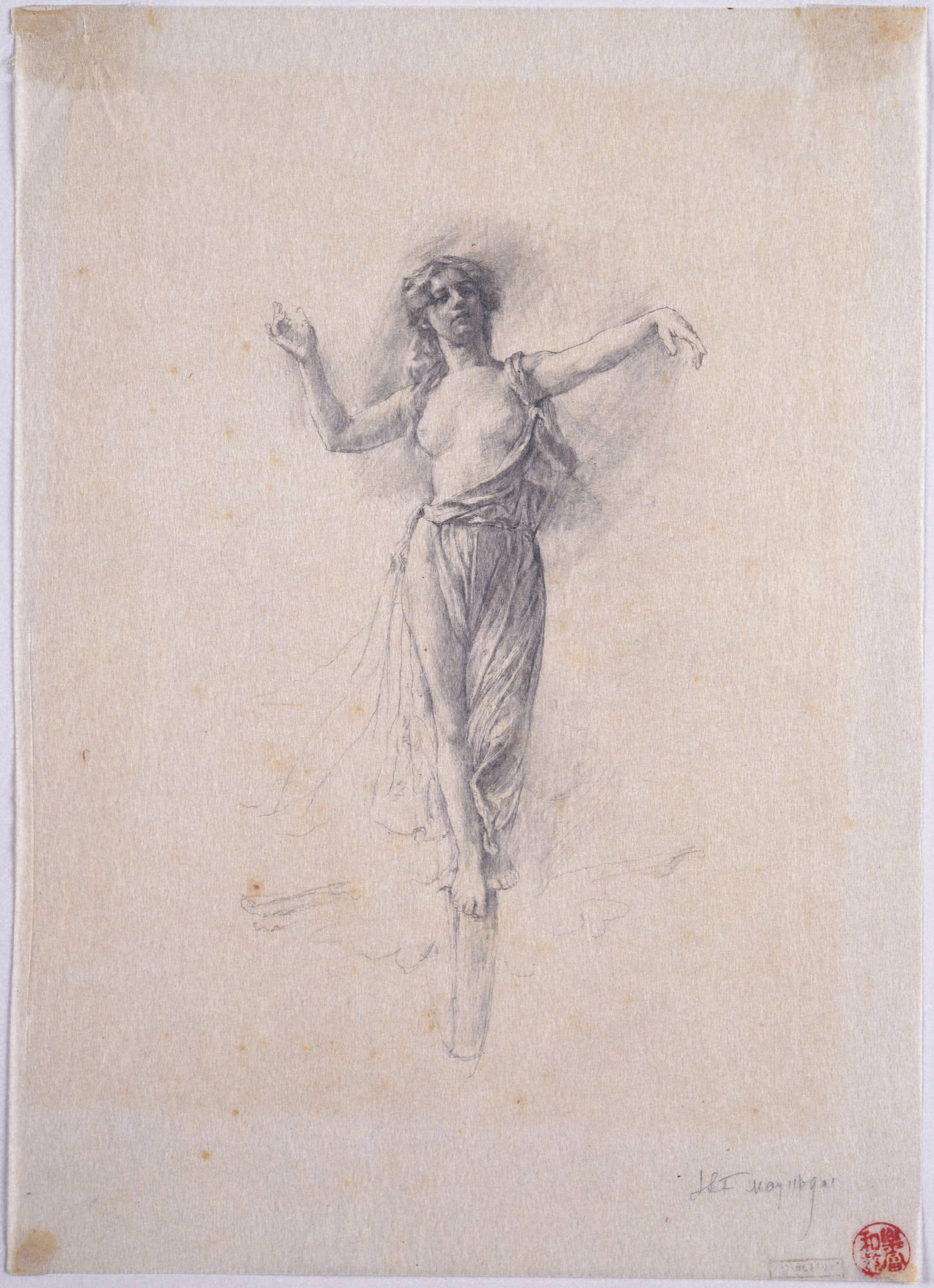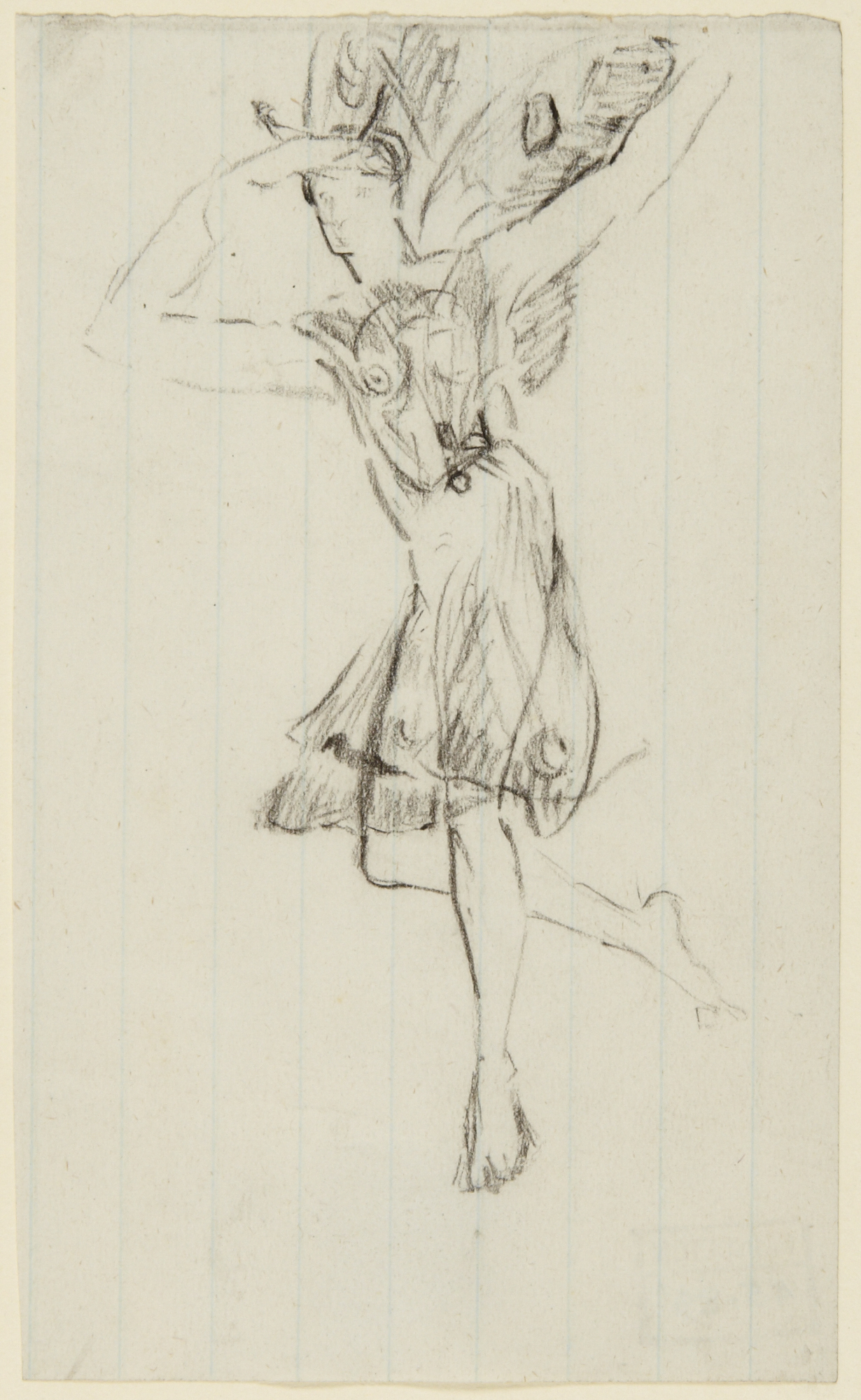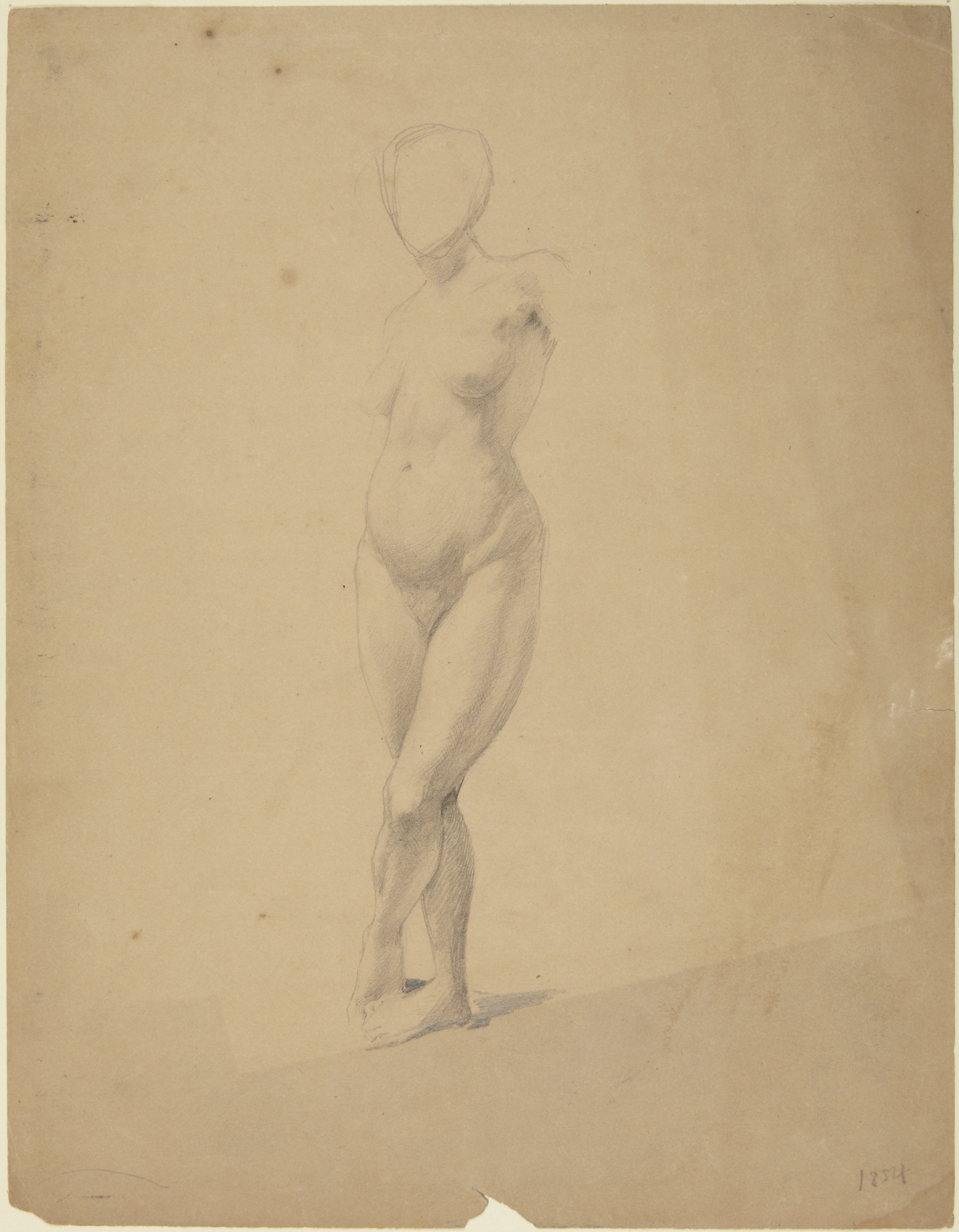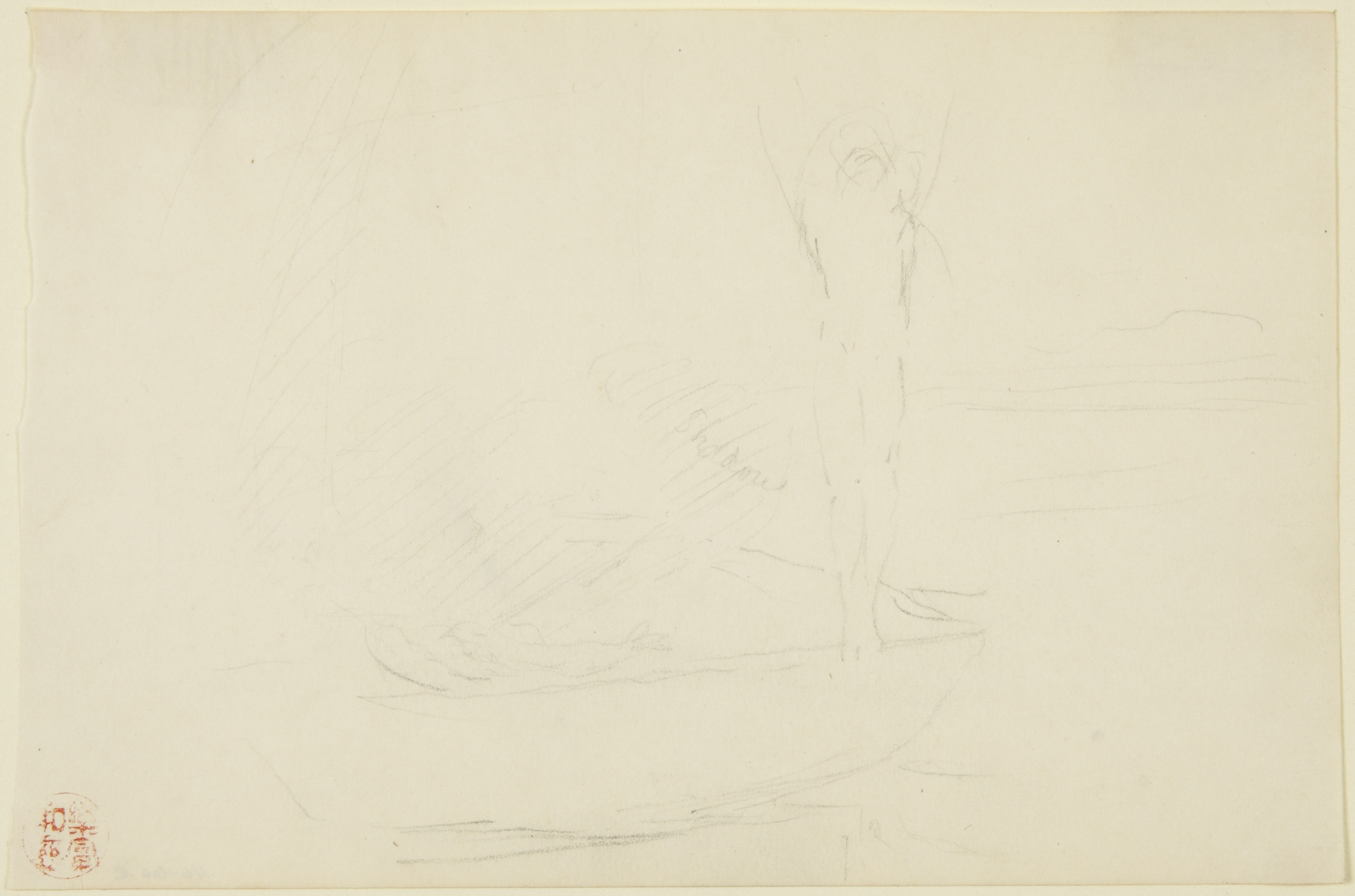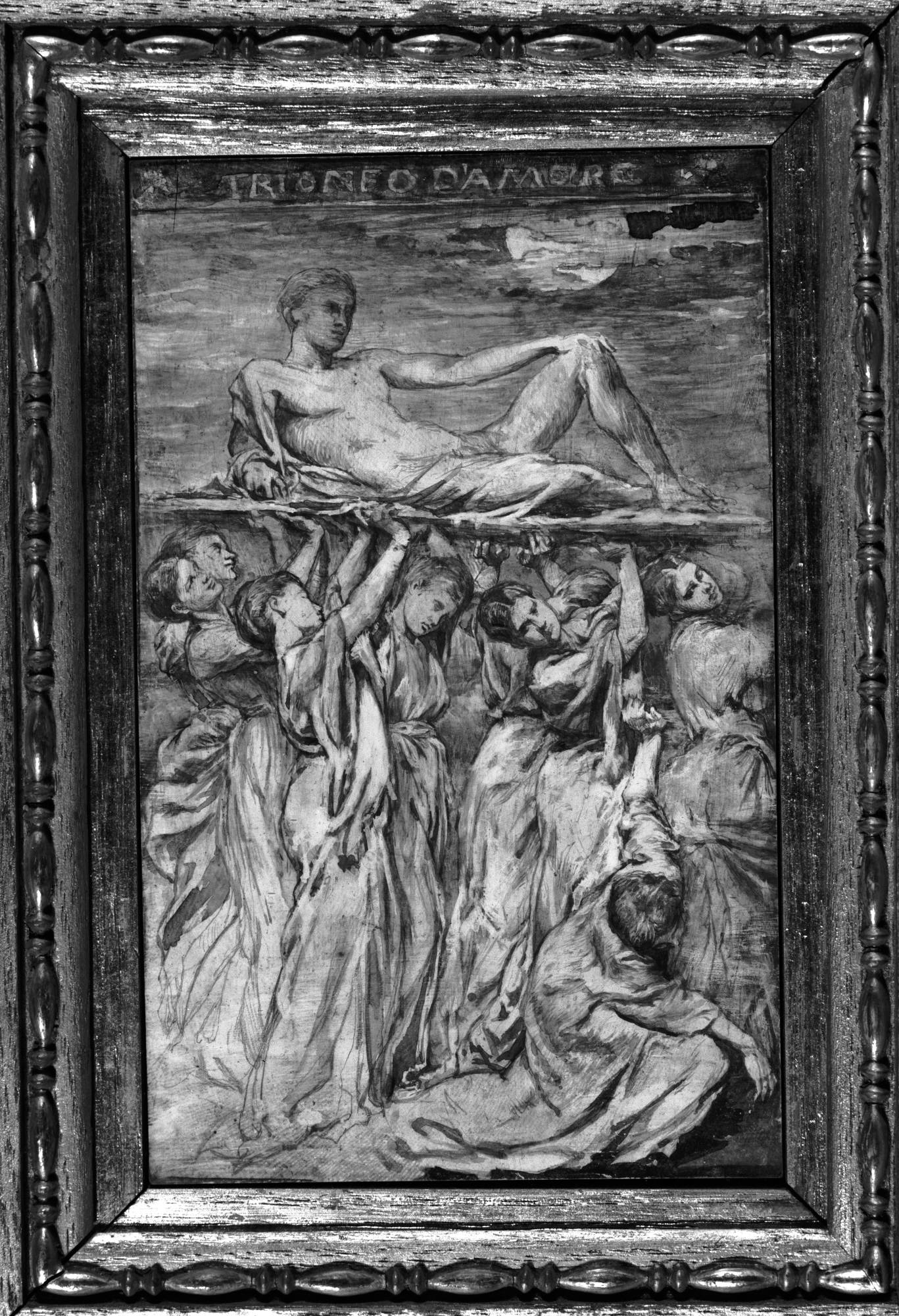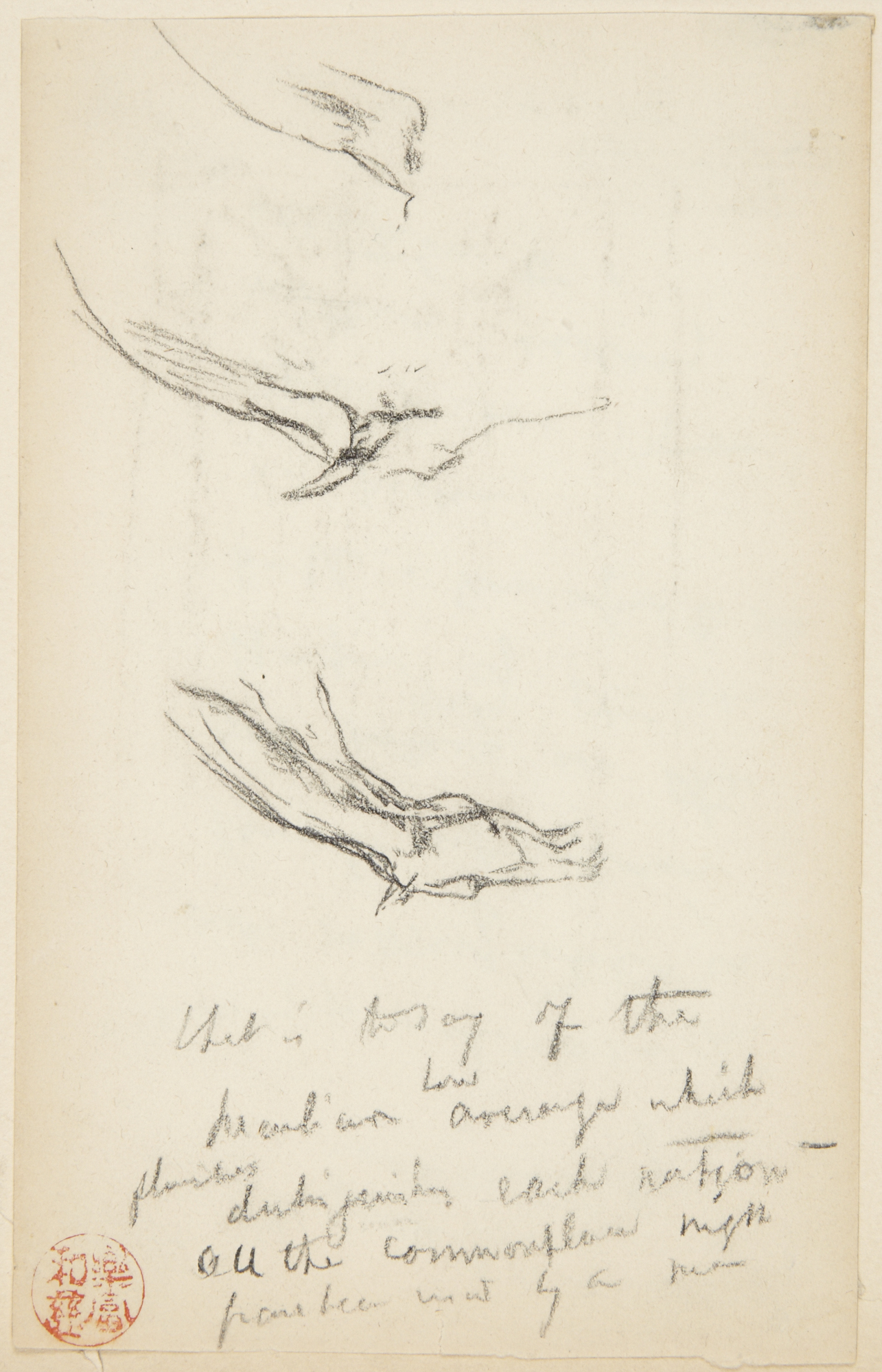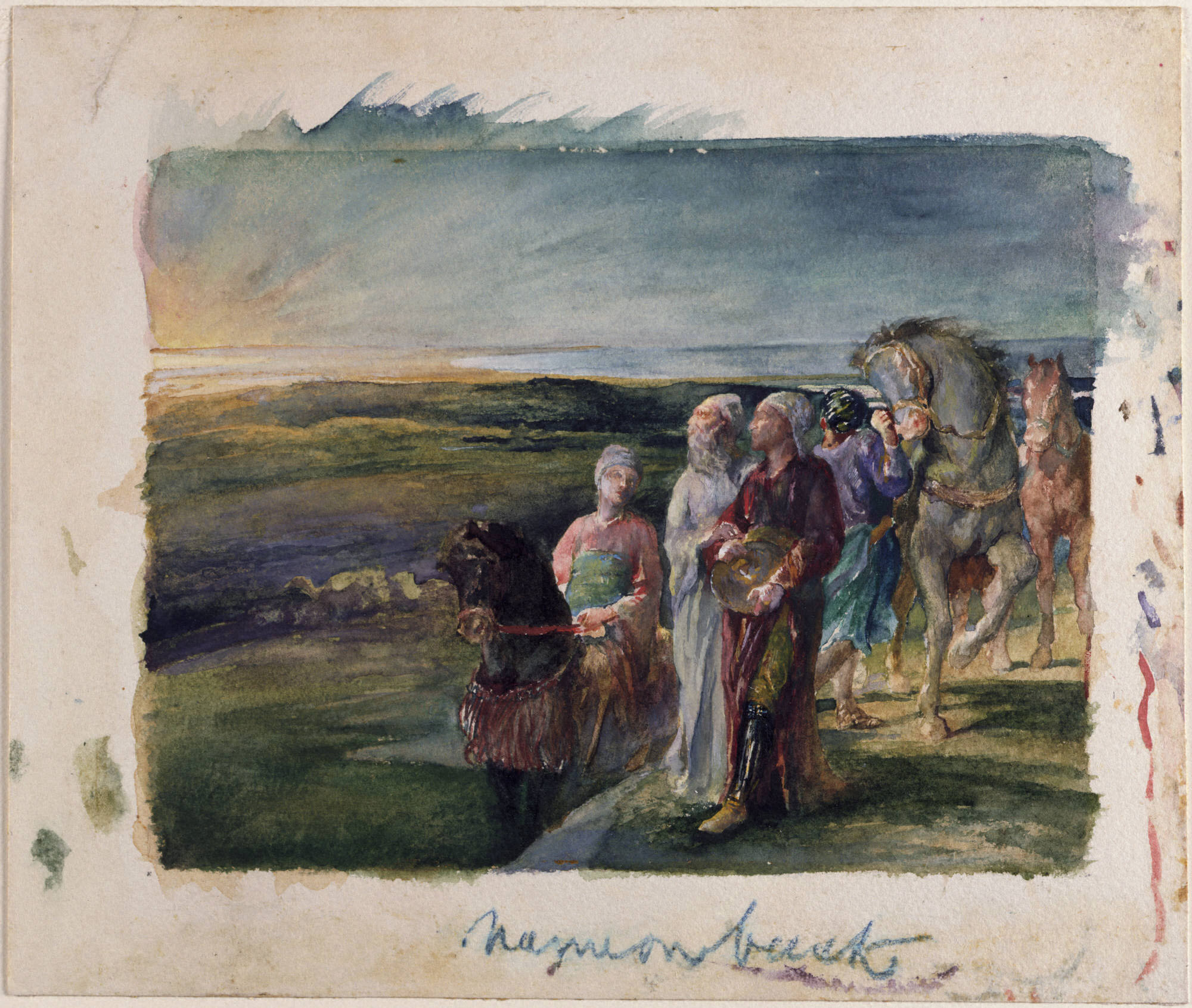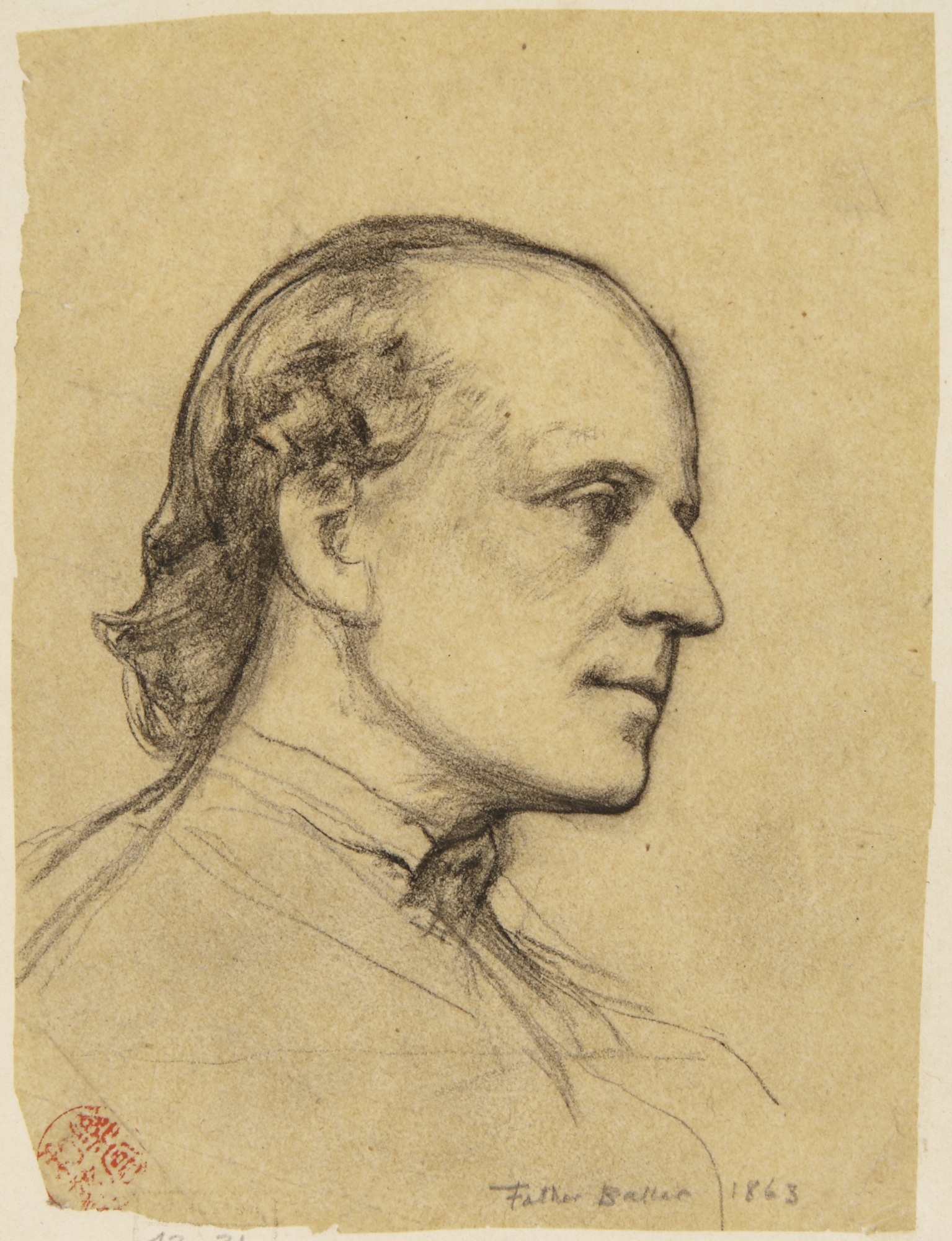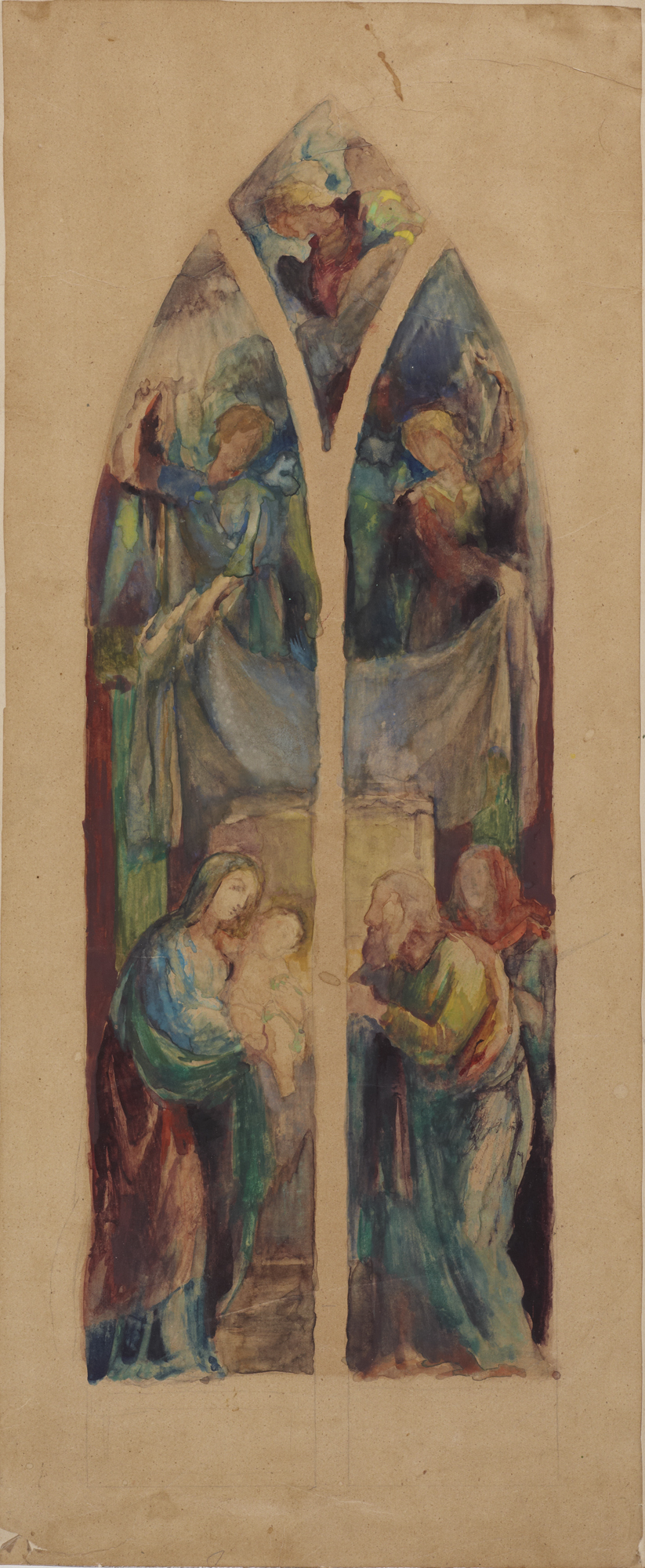John La Farge
John LaFarge was born in New York City, the son of prosperous French emigres, his father having been a refugee from the ill-fated Napoleonic expedition to San Domingo. LaFarge began drawing at an early age, had intermittent instruction, and graduated from the Roman Catholic Mount St. Mary's College in Maryland. In 1856 he went to Europe, worked briefly under the painter Thomas Couture in Paris, and traveled in northern Europe. Returning to the United States, he went to Newport in order to study with William Morris Hunt. There he met William and Henry James (William James was then also a student of Hunt's).
LaFarge was one of the first American artists to import and be influenced by Japanese color prints (1863). He made a trip to Japan with Henry Adams in 1886, later publishing An Artist's Letters from Japan (1897).
In 1876 LaFarge completed a whole complex of mural decorations for Richardson's distinguished Trinity Church in Copley Square, Boston; it was his first large-scale commission. H. H. Richardson won the architectural competition for the New Trinity; he and LaFarge had been friends for some time. LaFarge wrote of Trinity, "I was able to propose to Richardson to change entirely the character of his building. … I brought him photographs of the Spanish Romanesque churches, Avila and so forth. … It was thus that I came to decorate Trinity Church, Boston, which was being built by my friend Richardson, who believed in me without having much proof of what I could do in that way."
LaFarge worked out a technique for creating opalescent glass, and had many commissions from churches and private patrons for stained glass windows. Some of the important commissions were for windows at Trinity Church, Boston; Memorial Hall at Harvard; the Church of the Incarnation and the Paulist Church, New York City. But alongside these commissions, LaFarge continued to paint and accept mural commissions. Perhaps the best known of the latter is the great apse mural of the Ascension of Christ in the Church of the Ascension in New York City, completed in 1887.
By birth, upbringing and style of life, John LaFarge was a cosmopolite. The evidence of his own contemporaries is that he exercised a considerable personal magnetism. Elihu Vedder, who was only a year younger than LaFarge as one of the few whose approval he valued. Vedder admired in LaFarge's paintings "his striving to express shades of thought so delicate that they seem to render words almost useless."
Jane Dillenberger and Joshua C. Taylor The Hand and the Spirit: Religious Art in America 1700–1900 (Berkeley, Cal.: University Art Museum, 1972)



